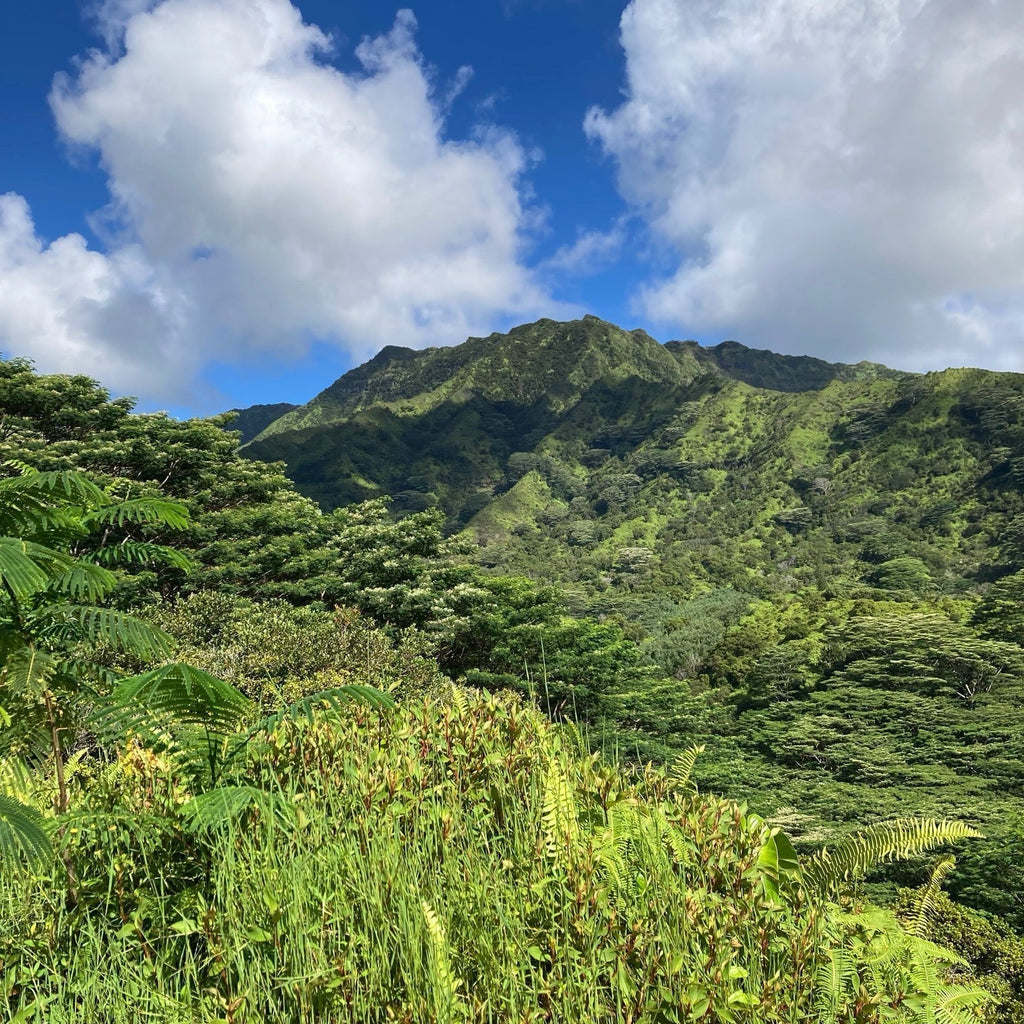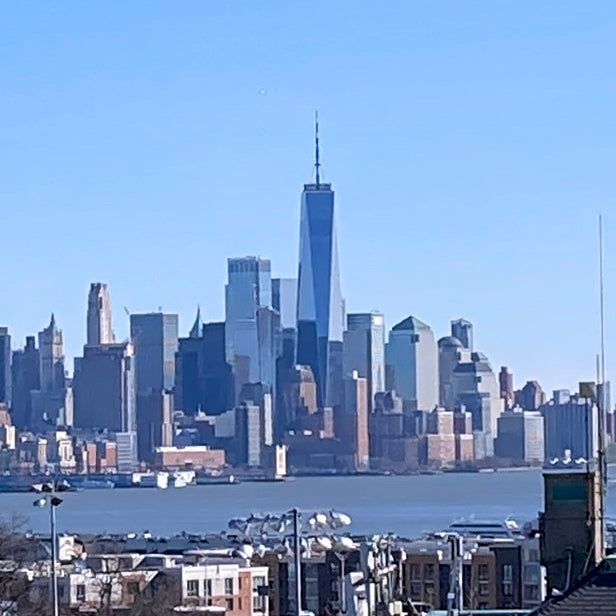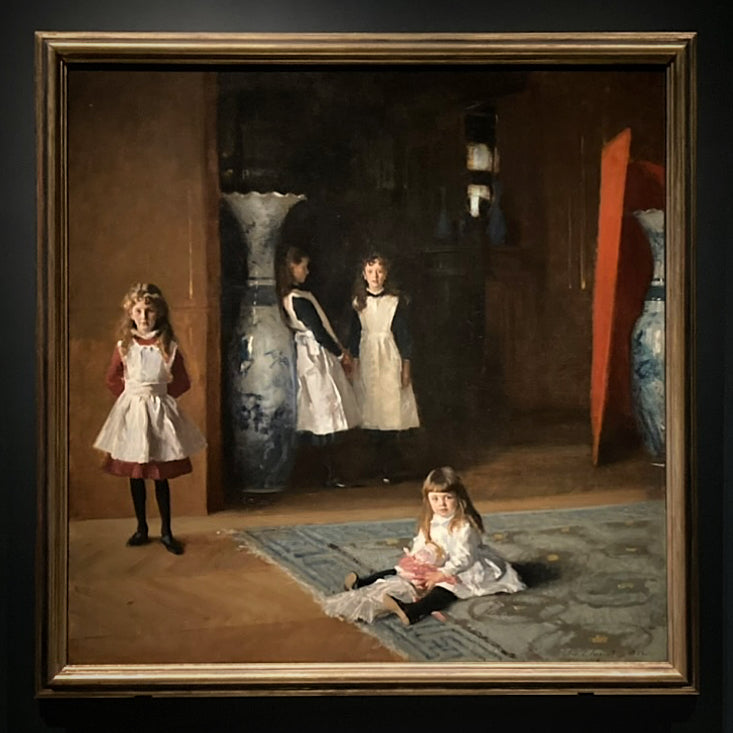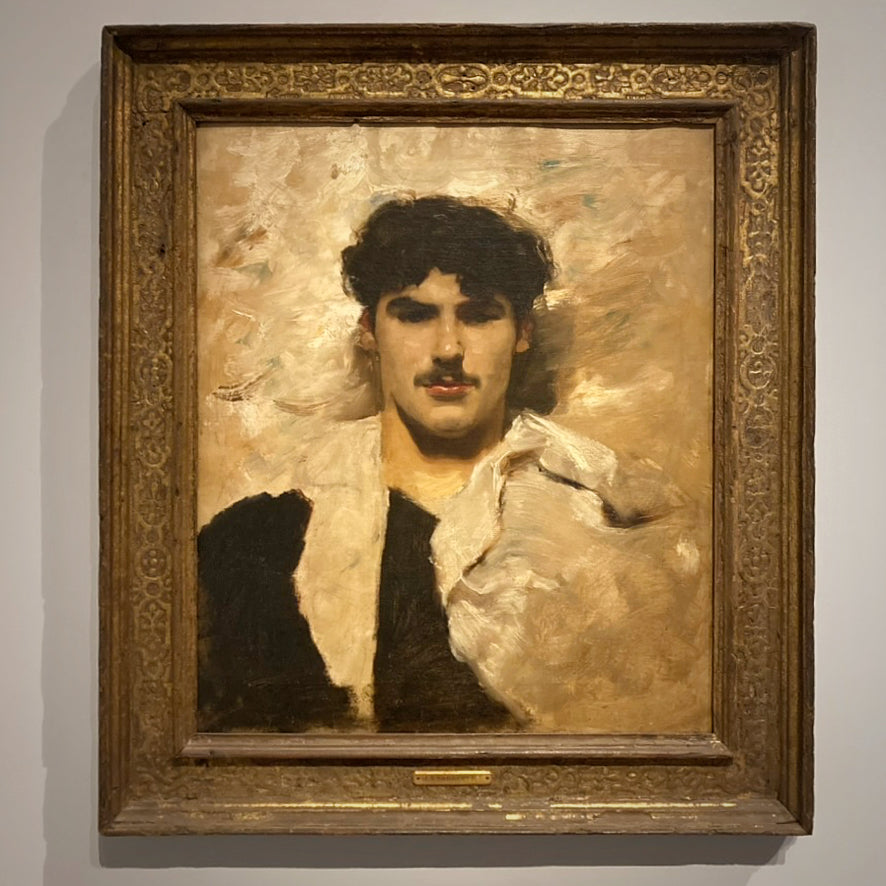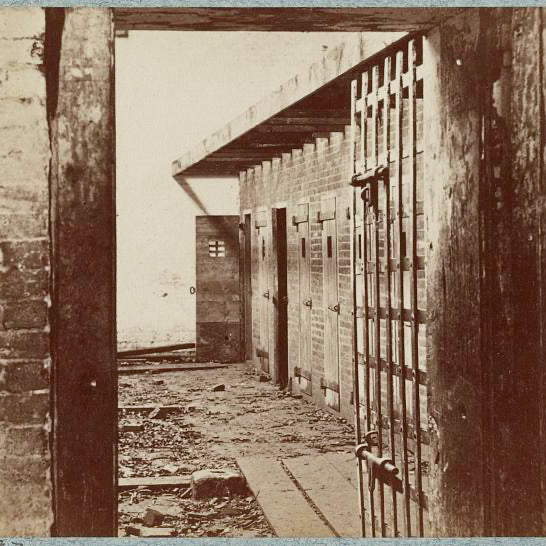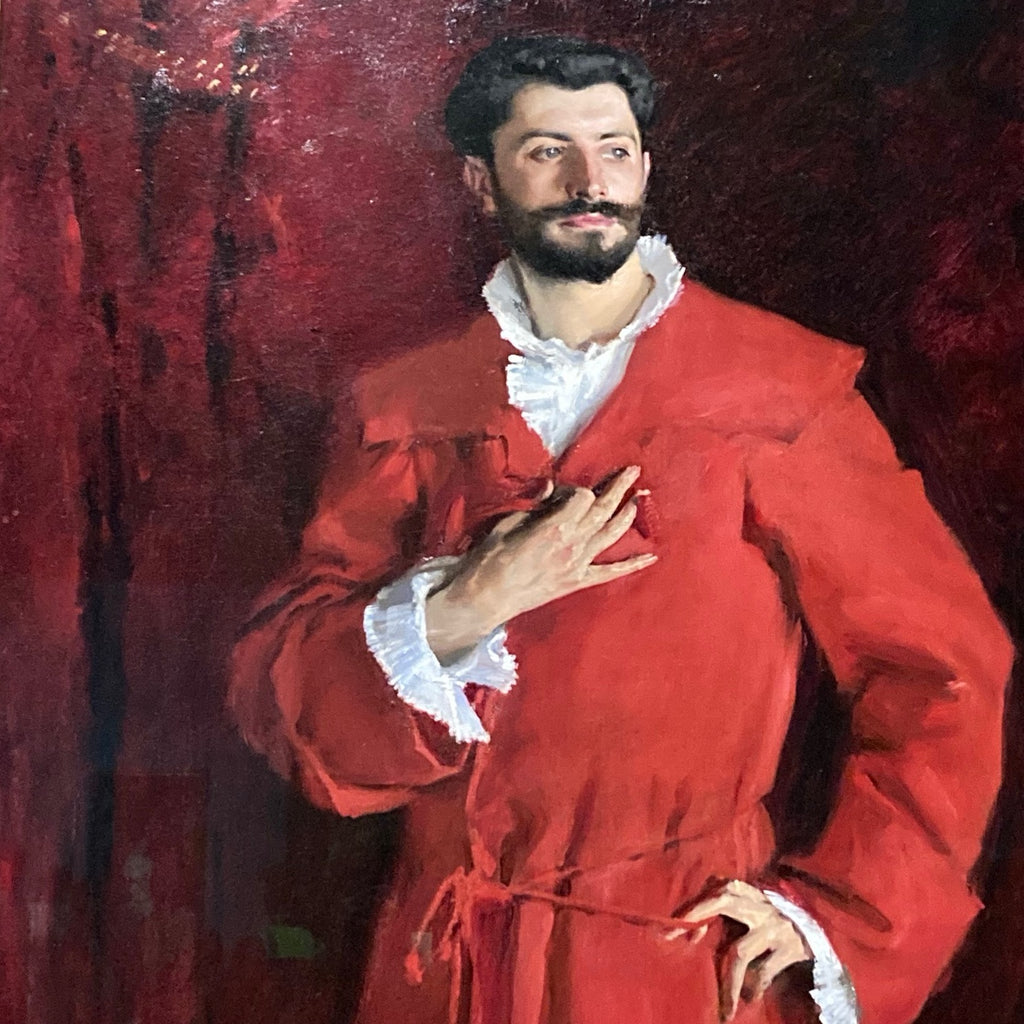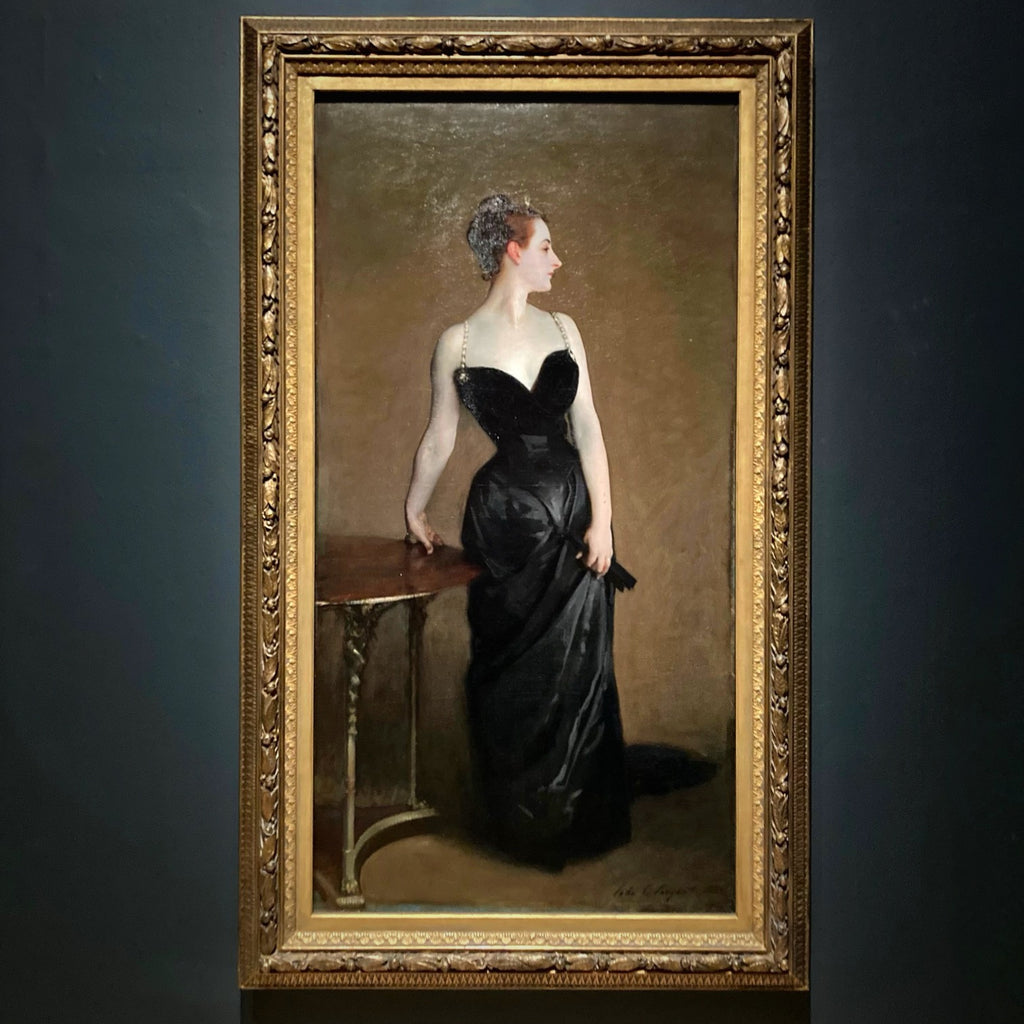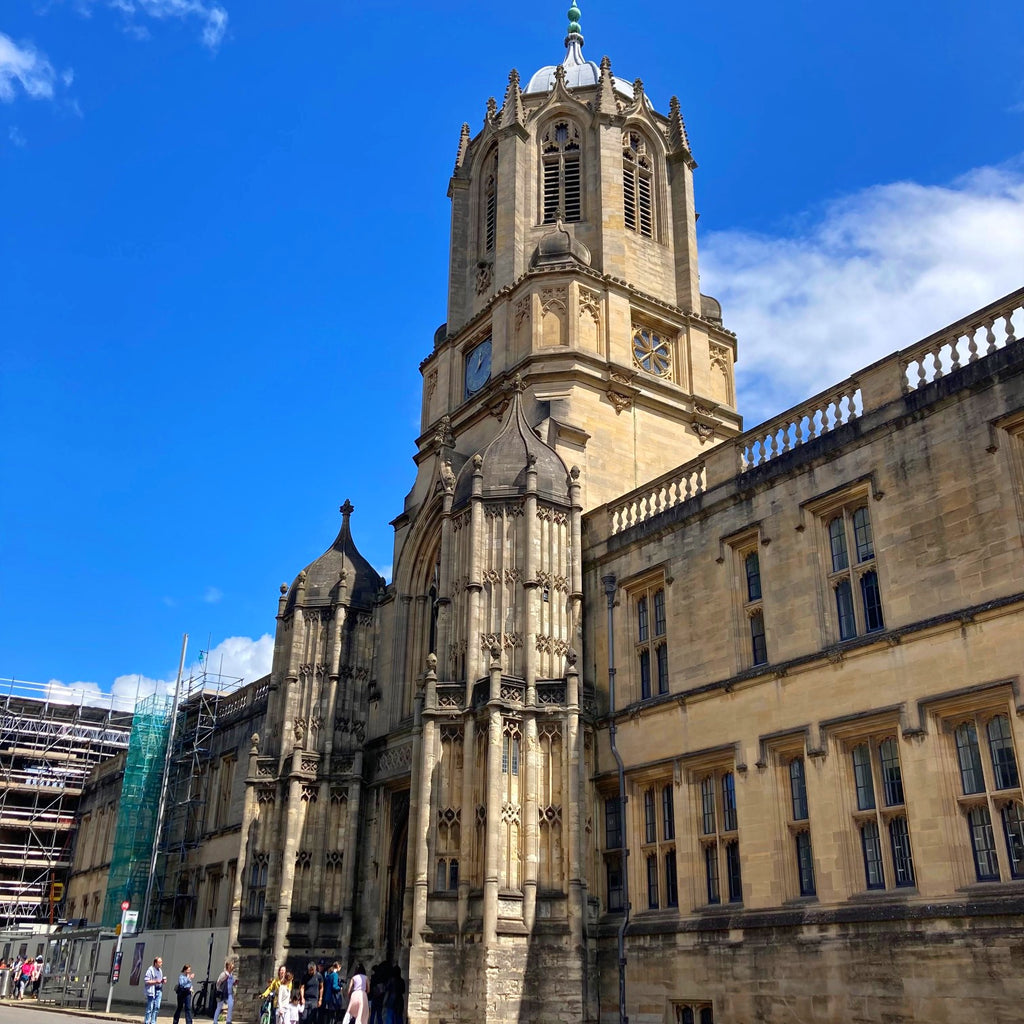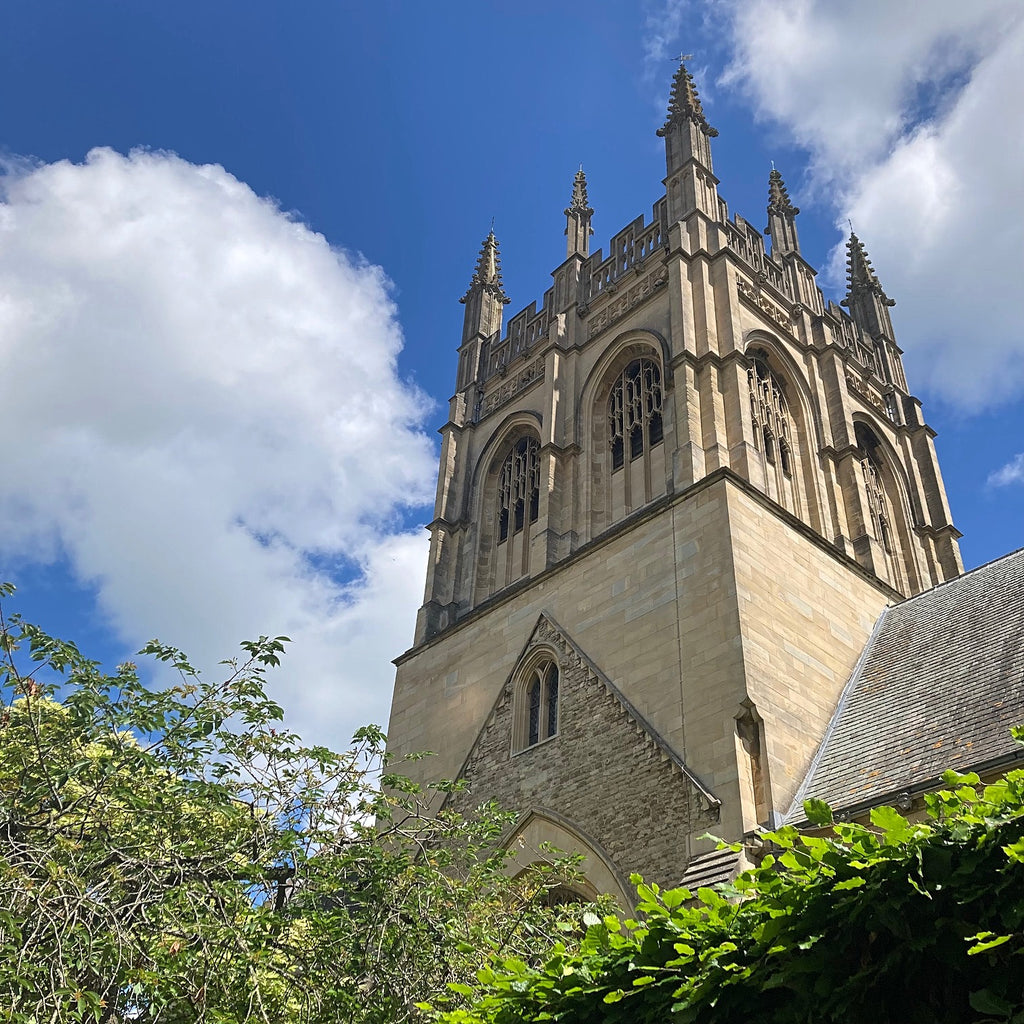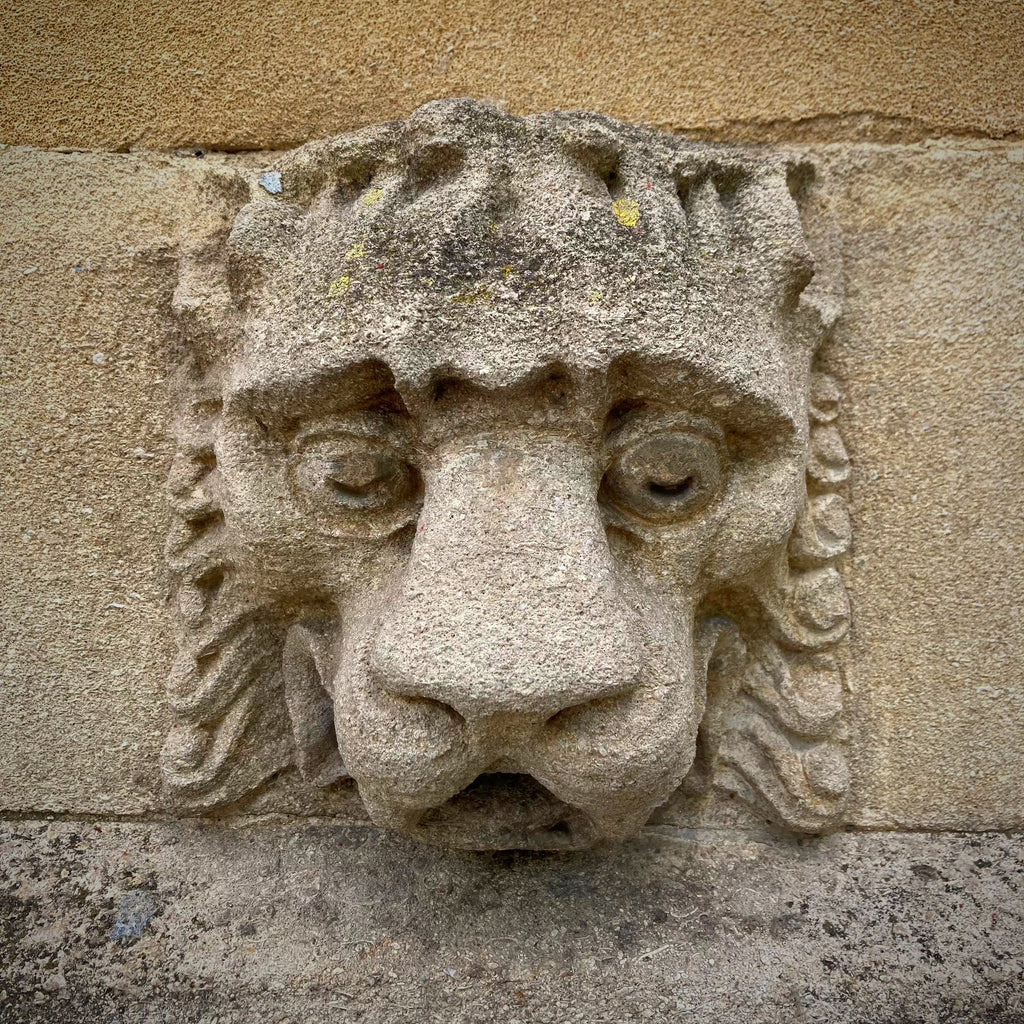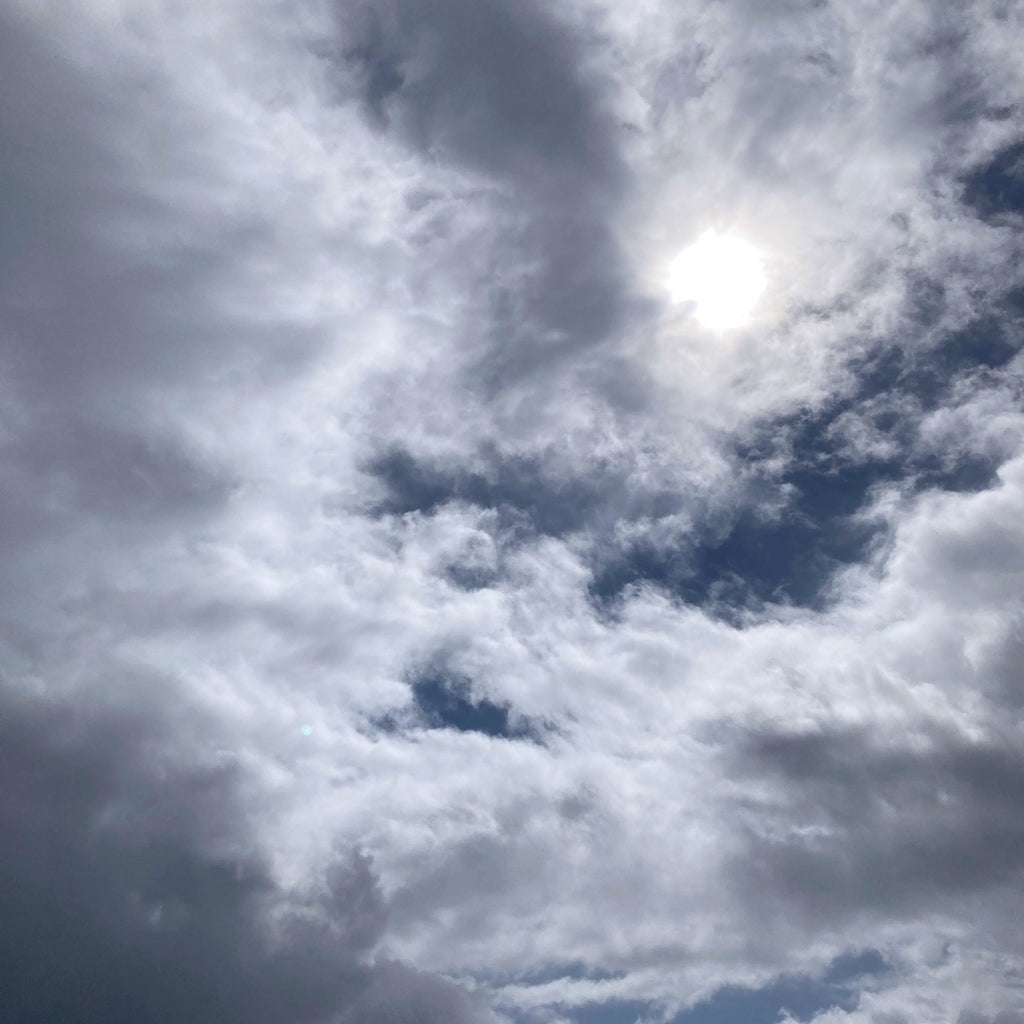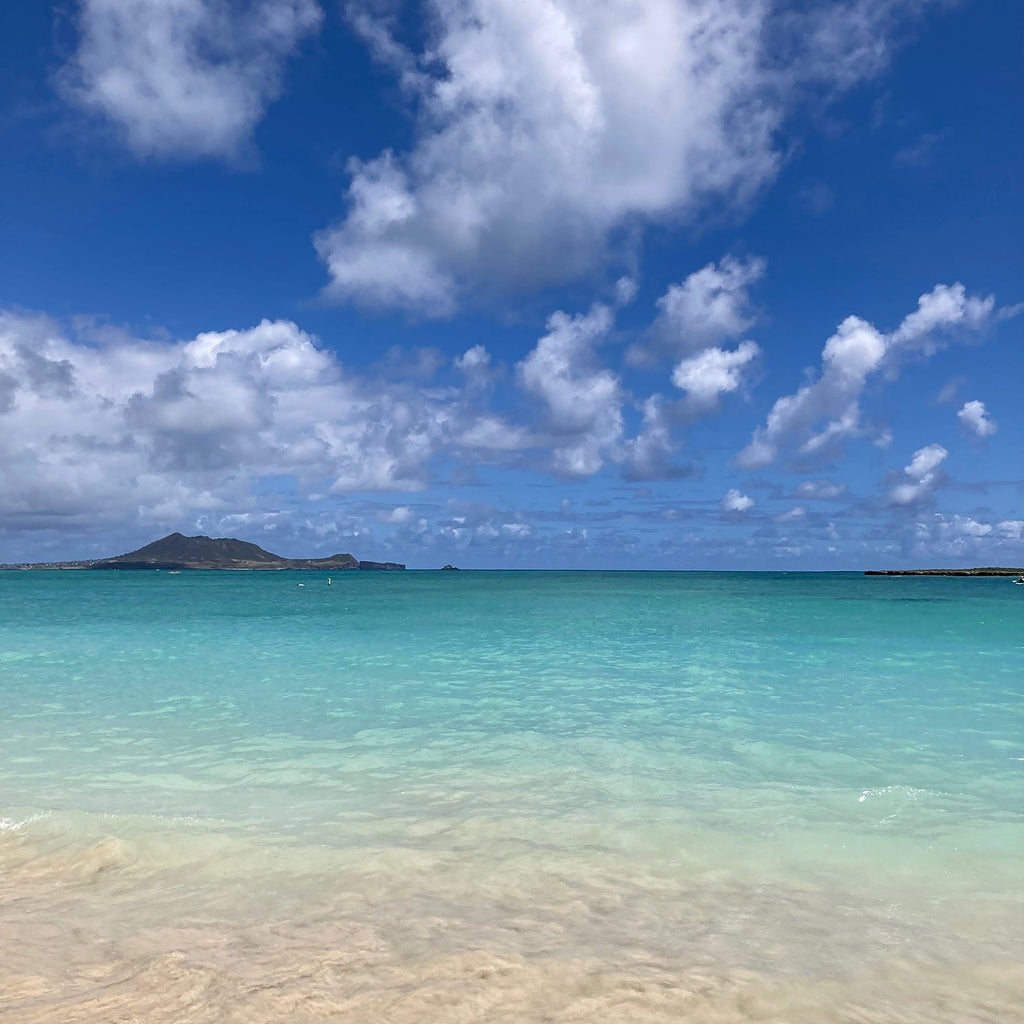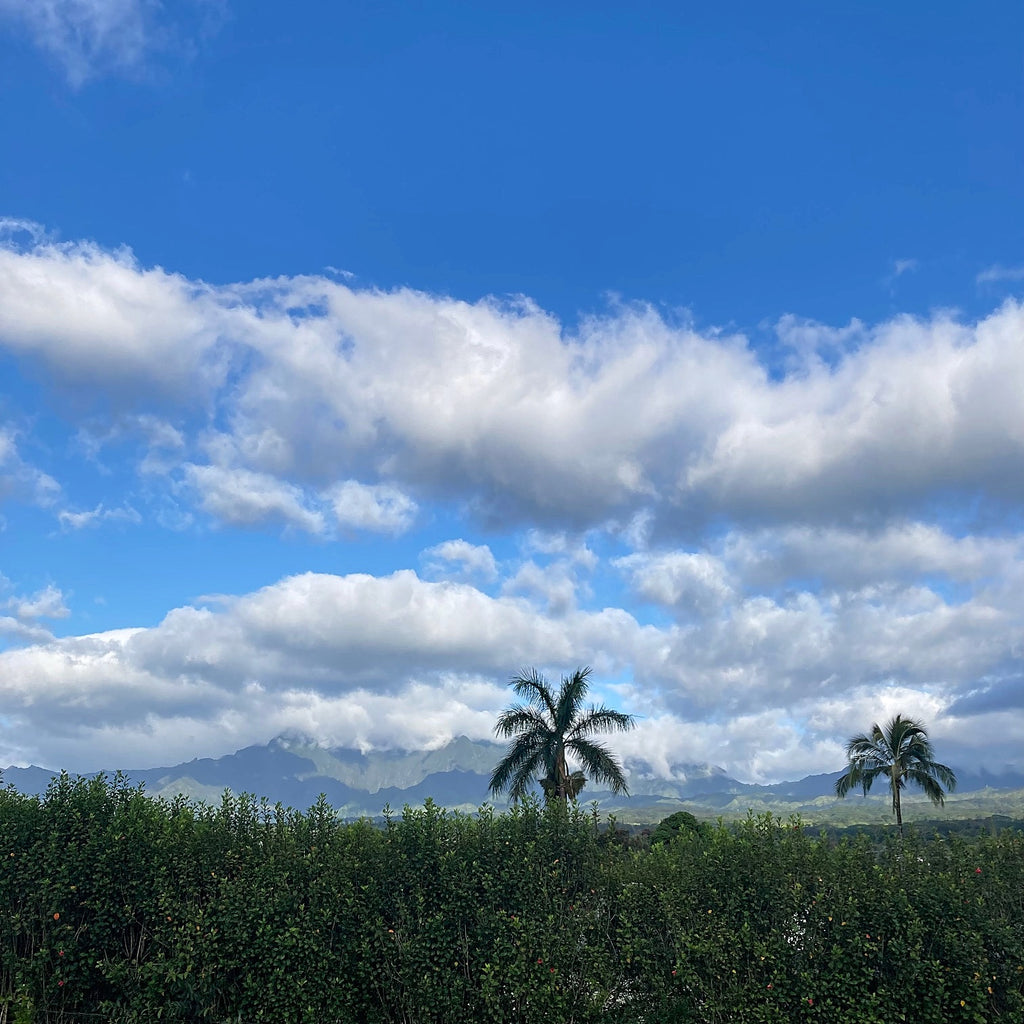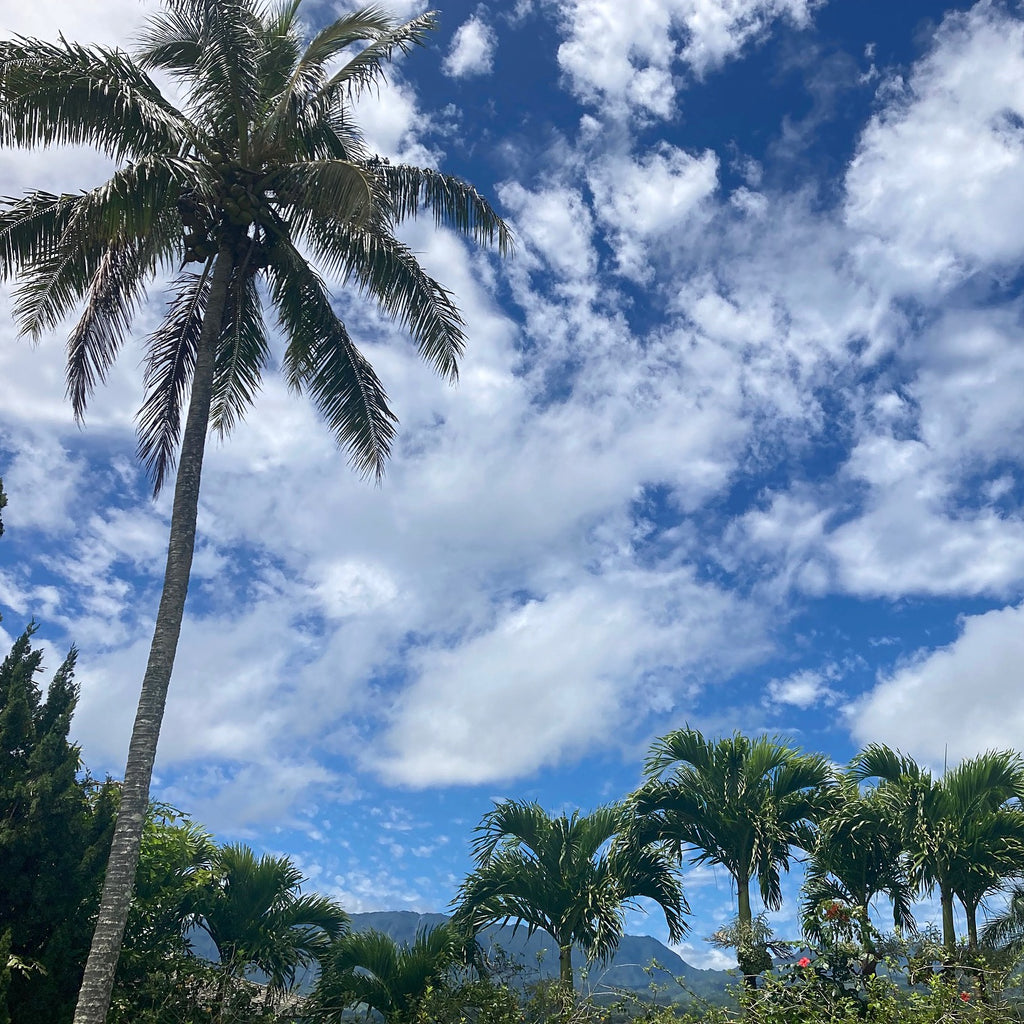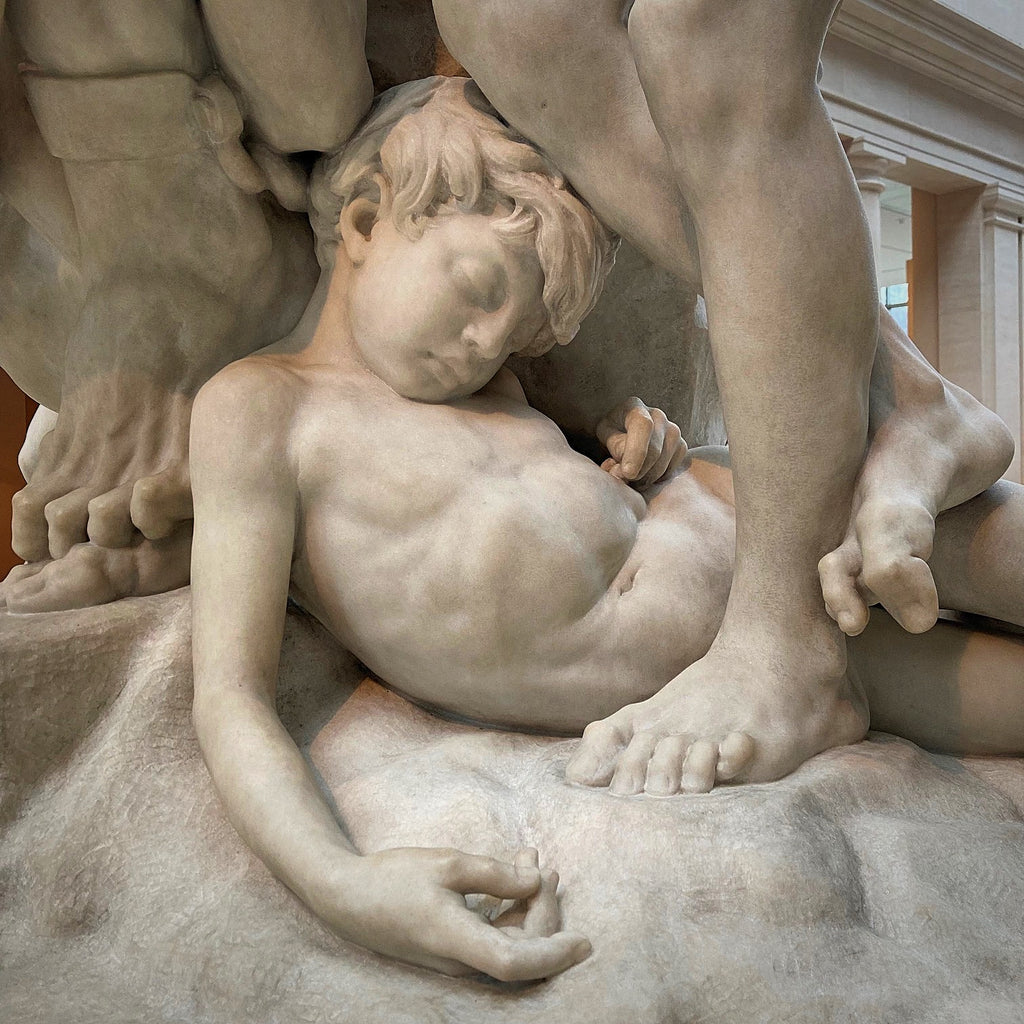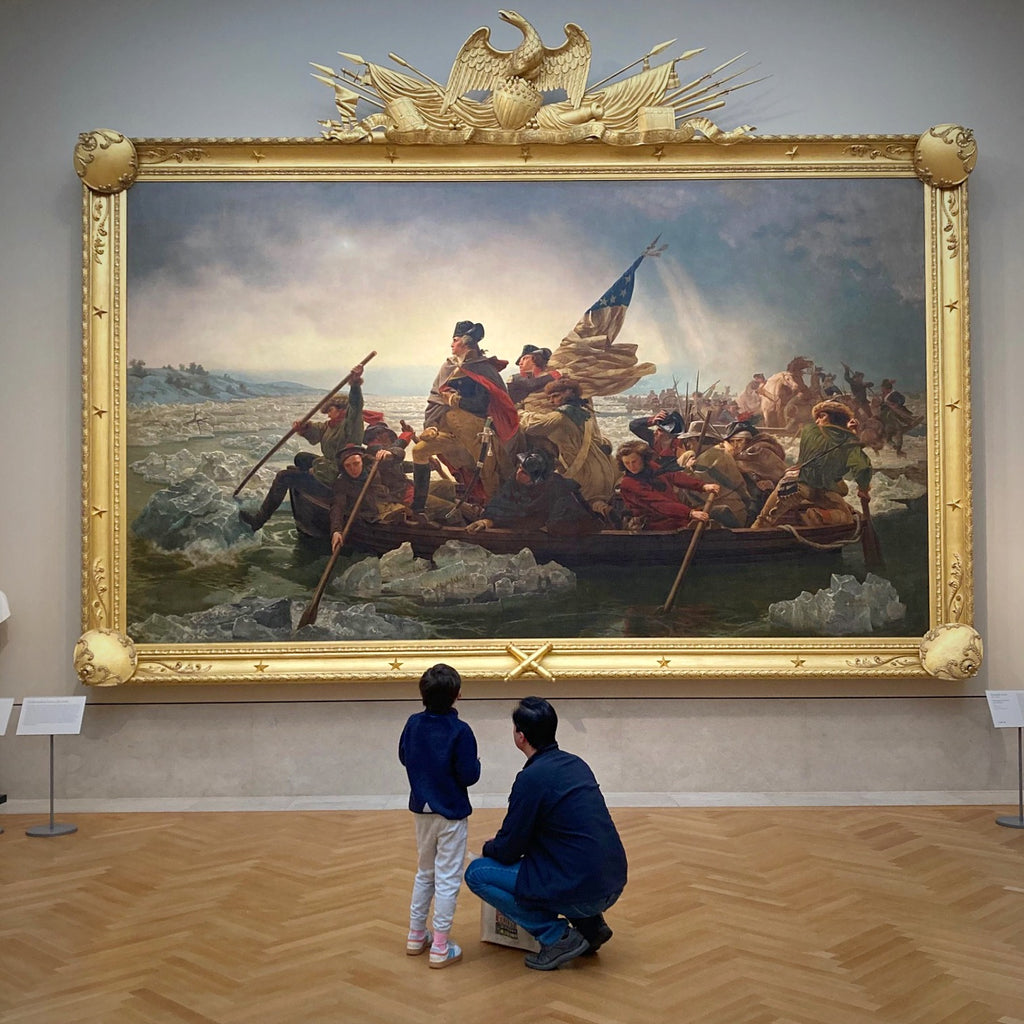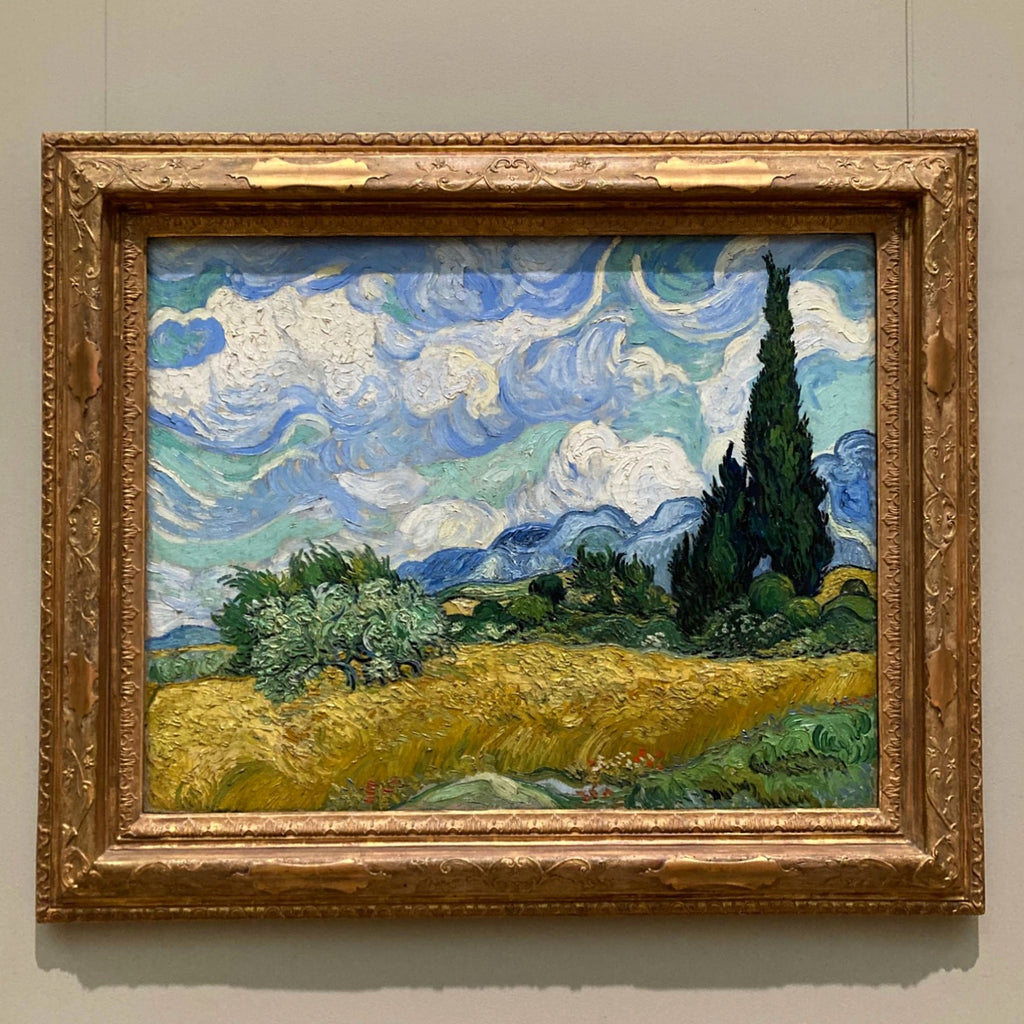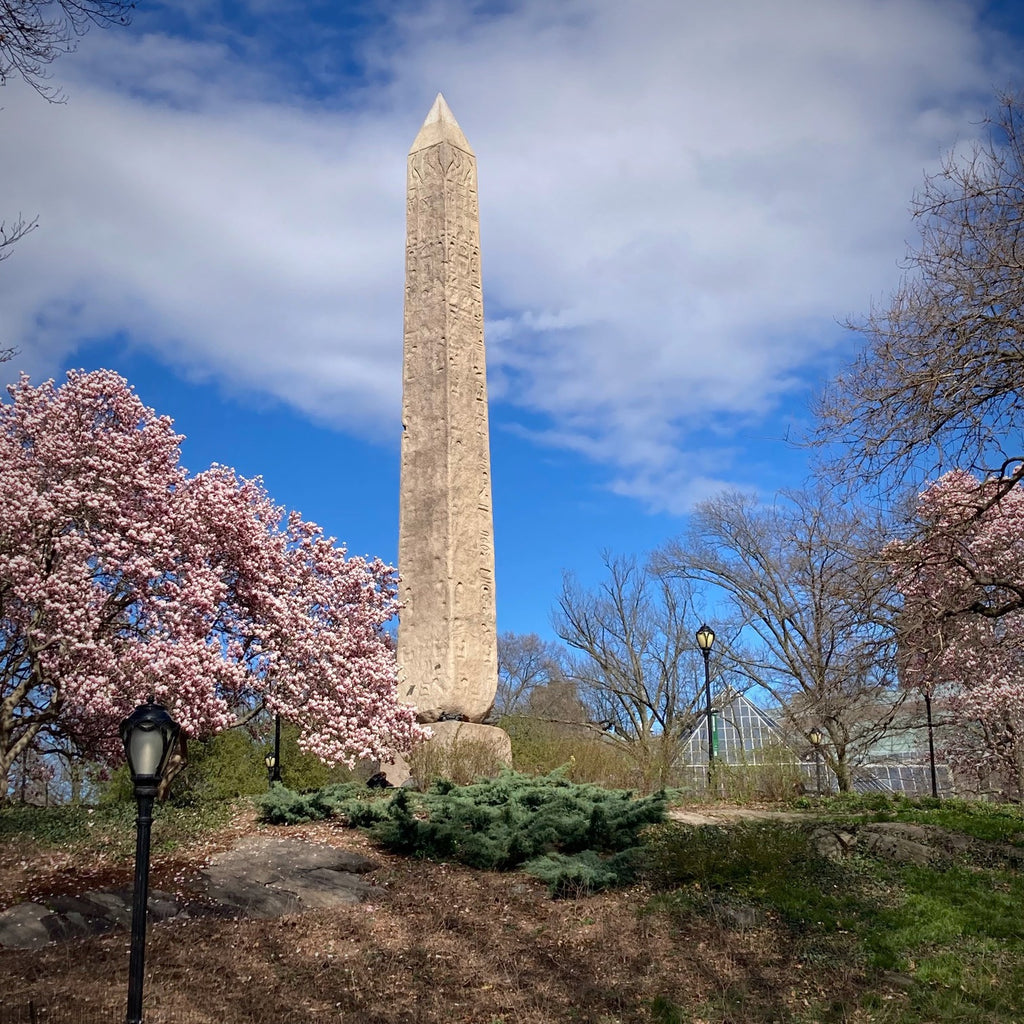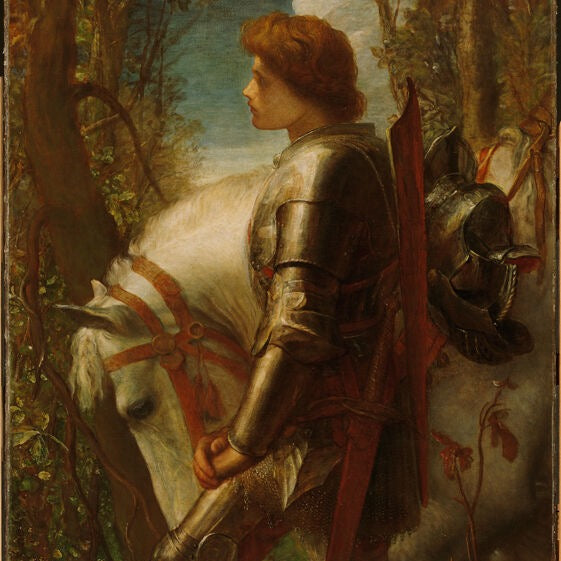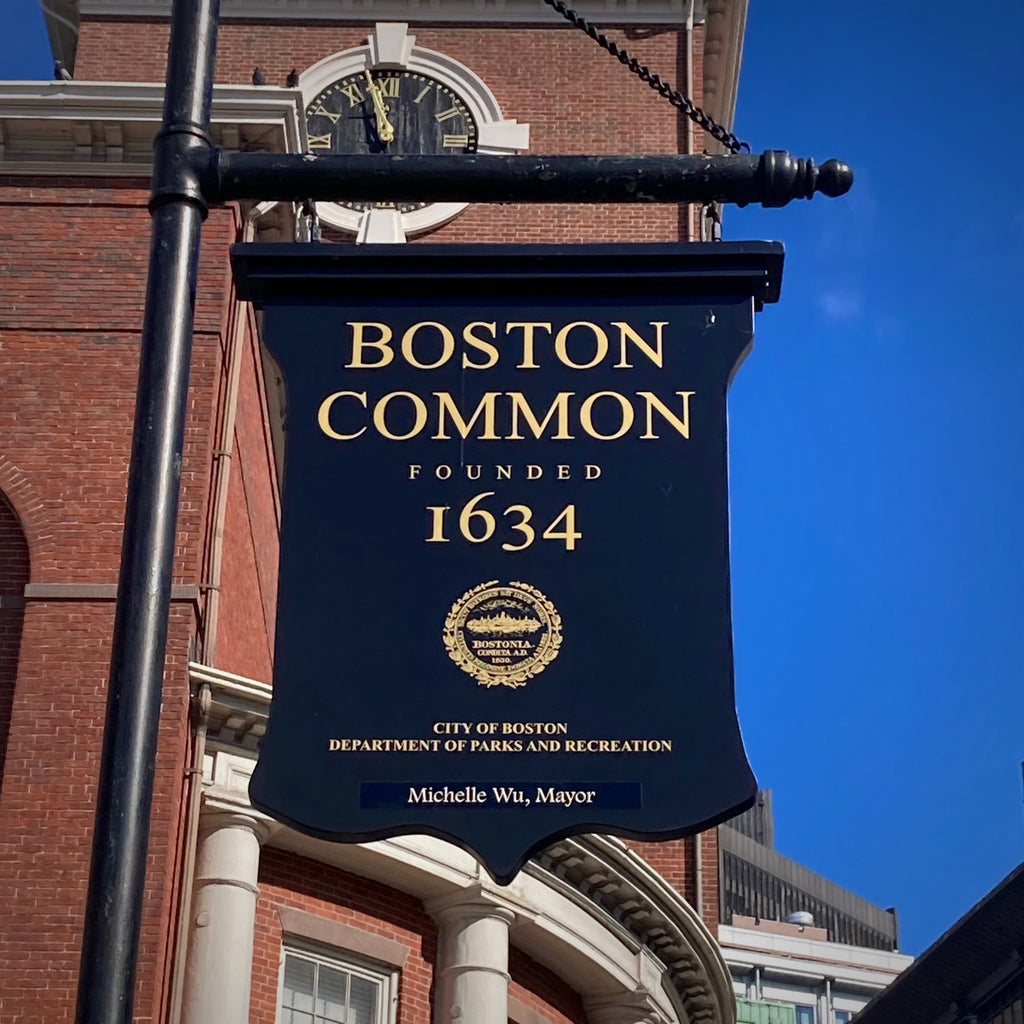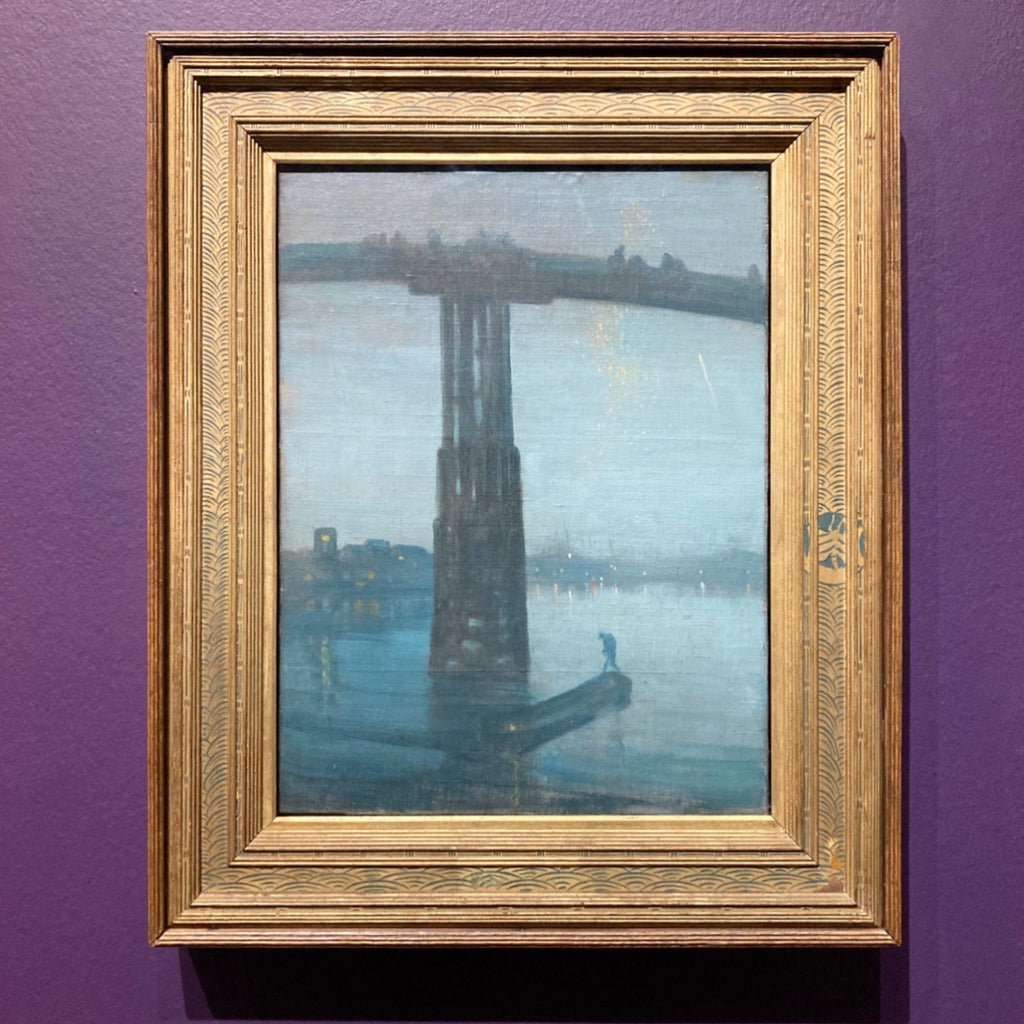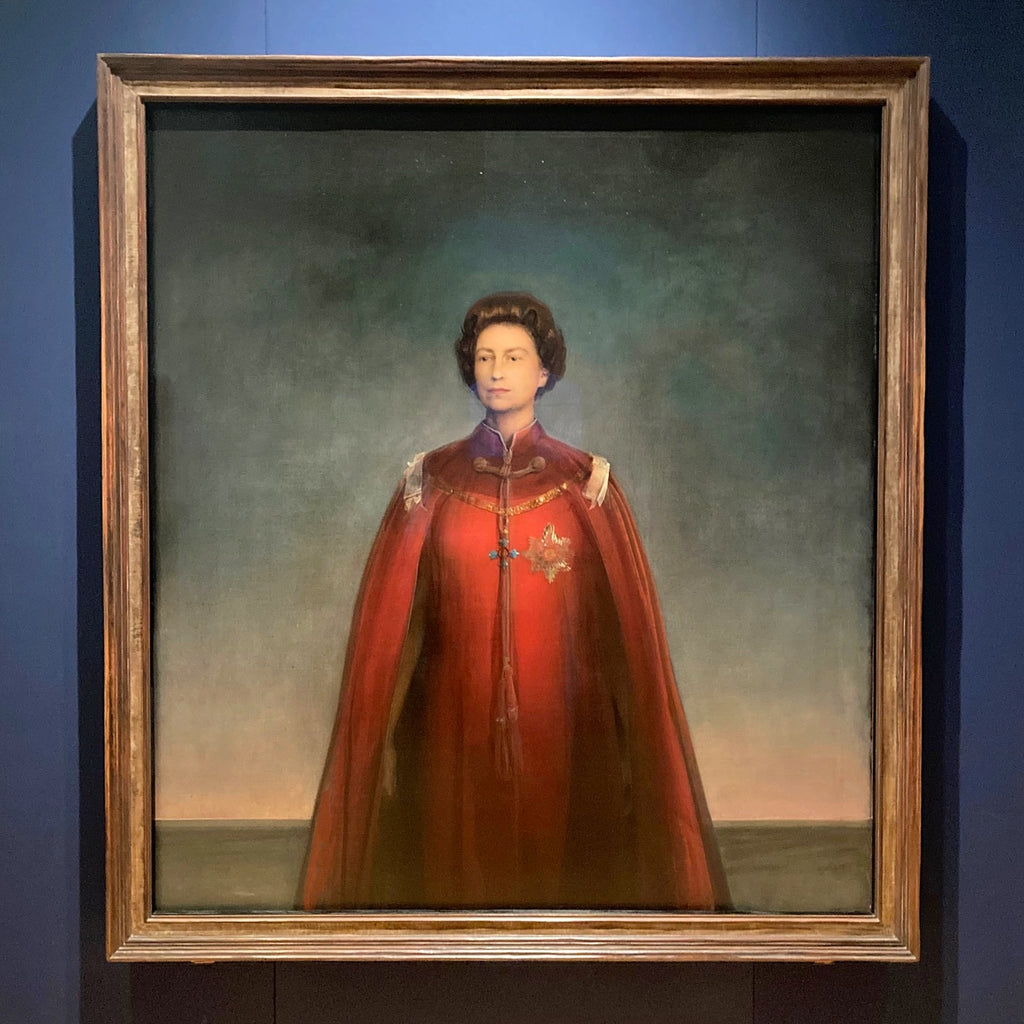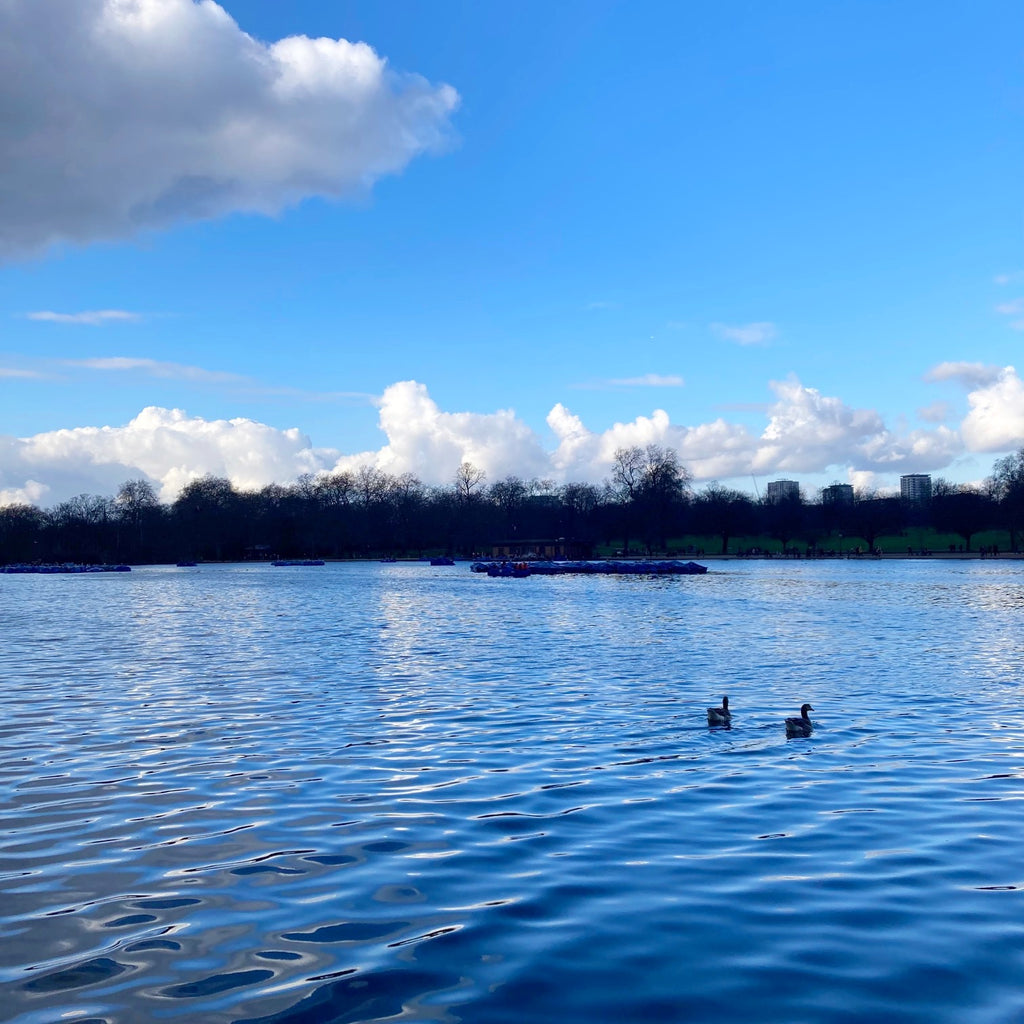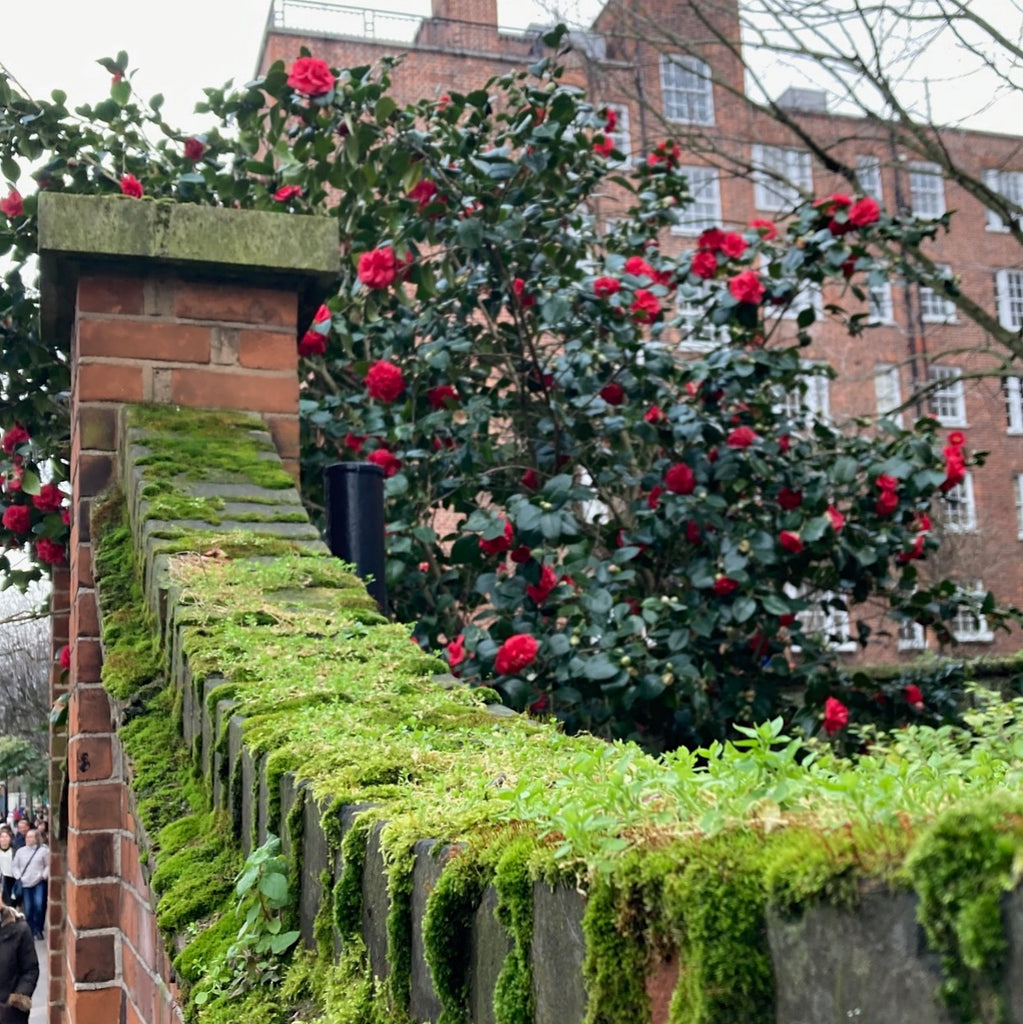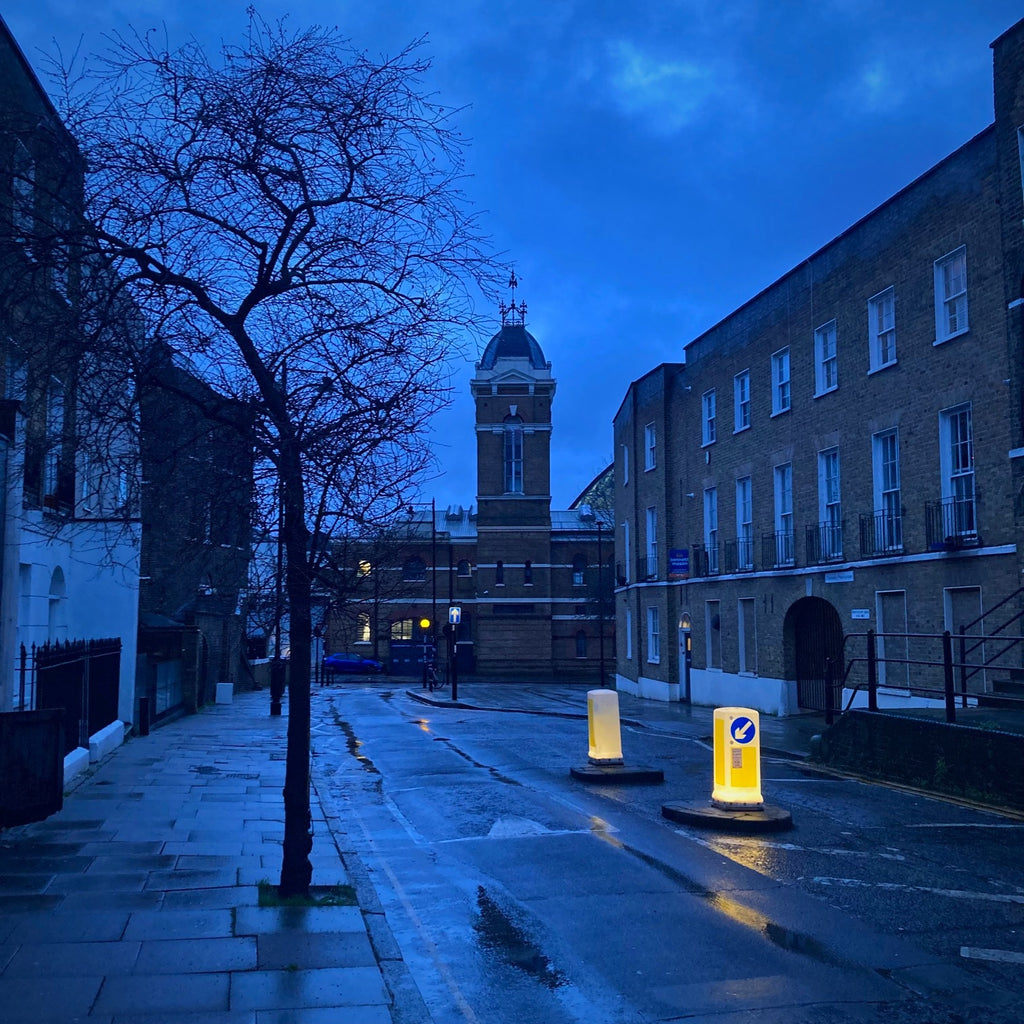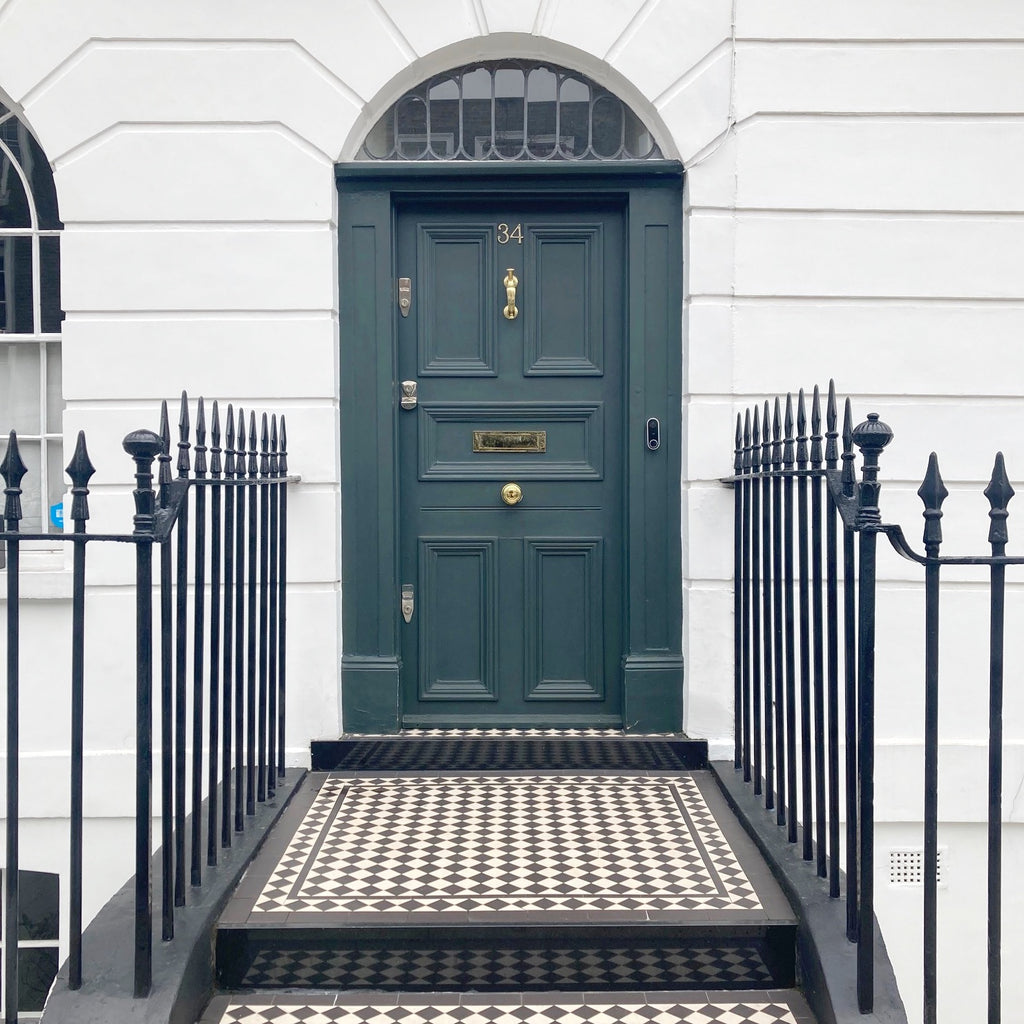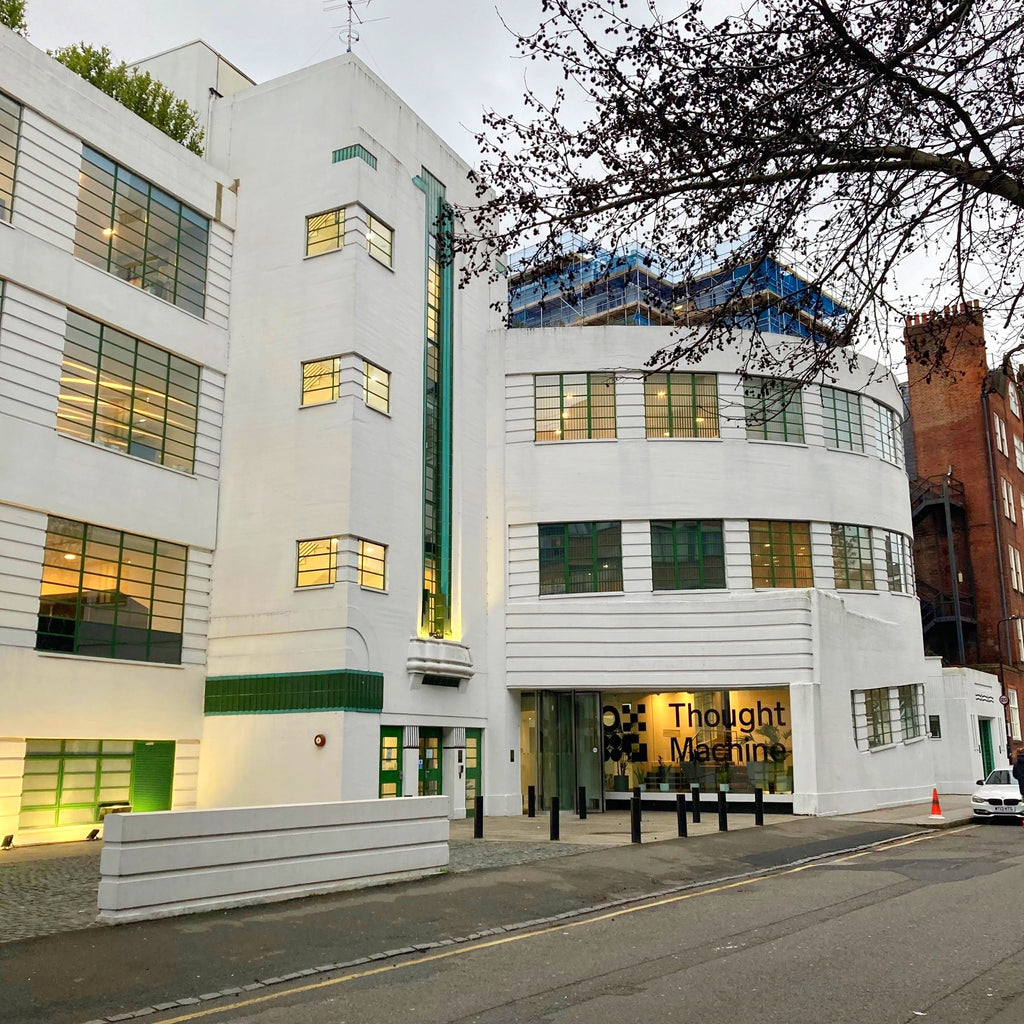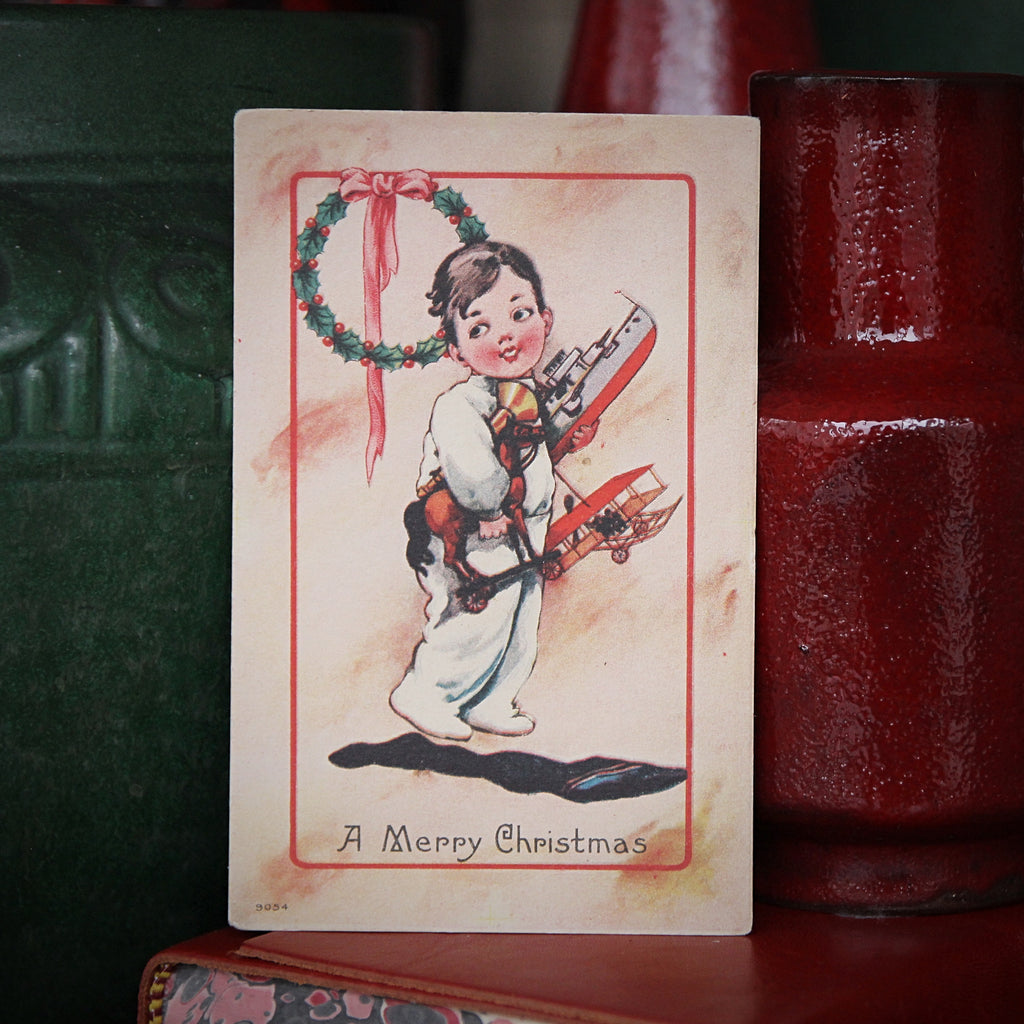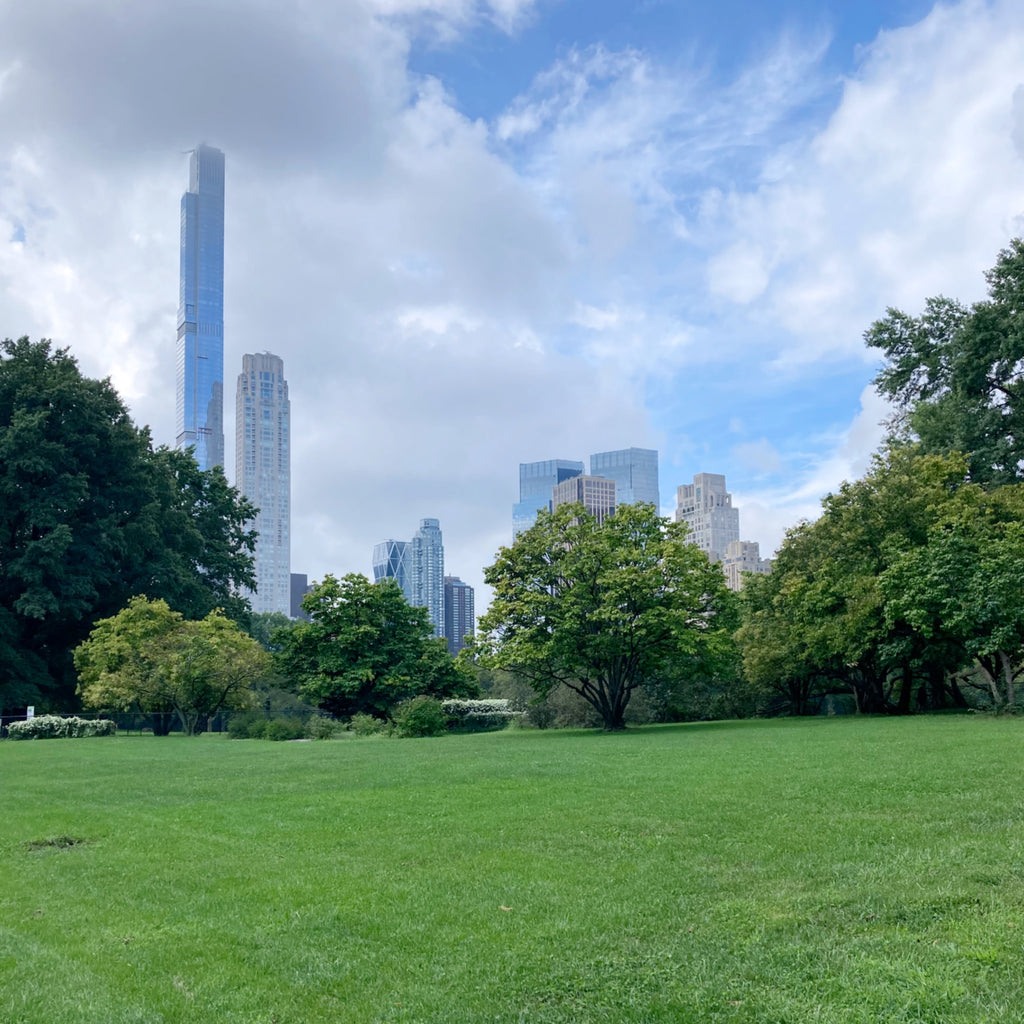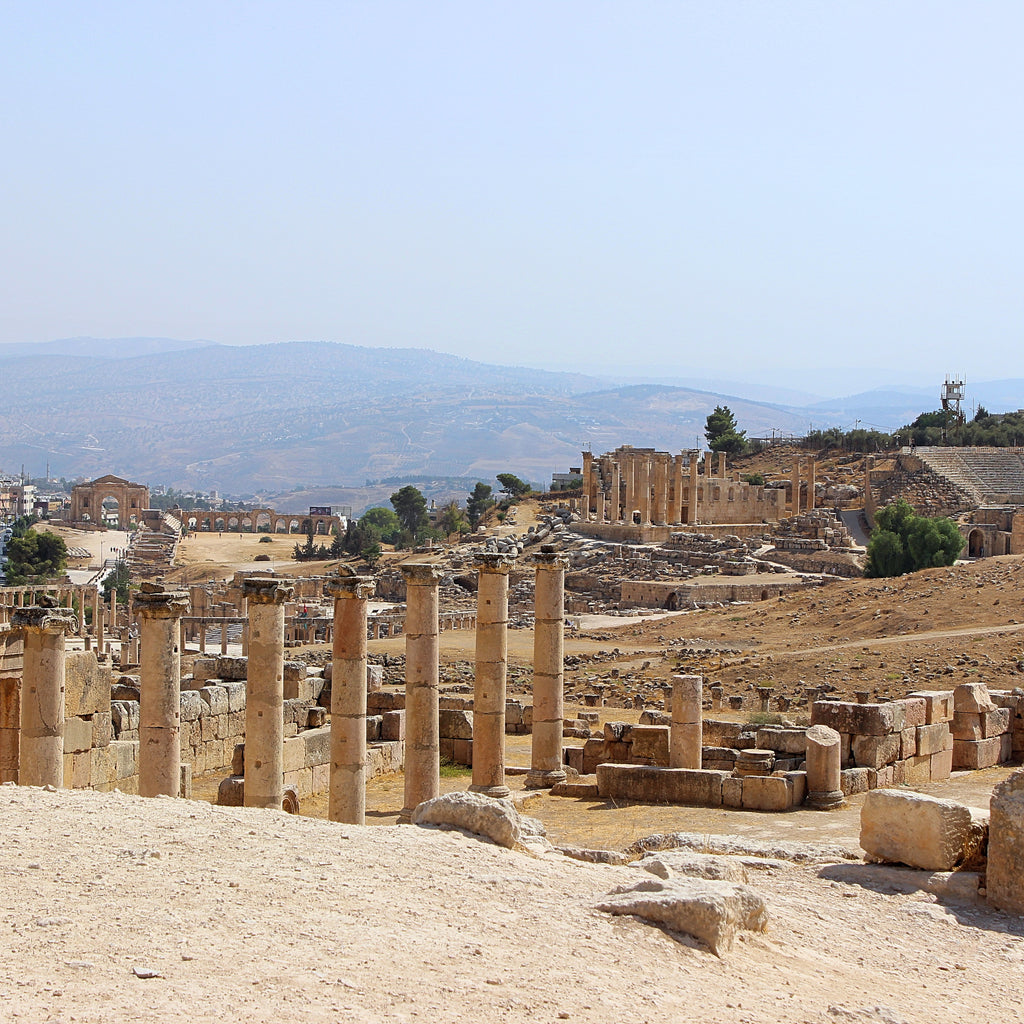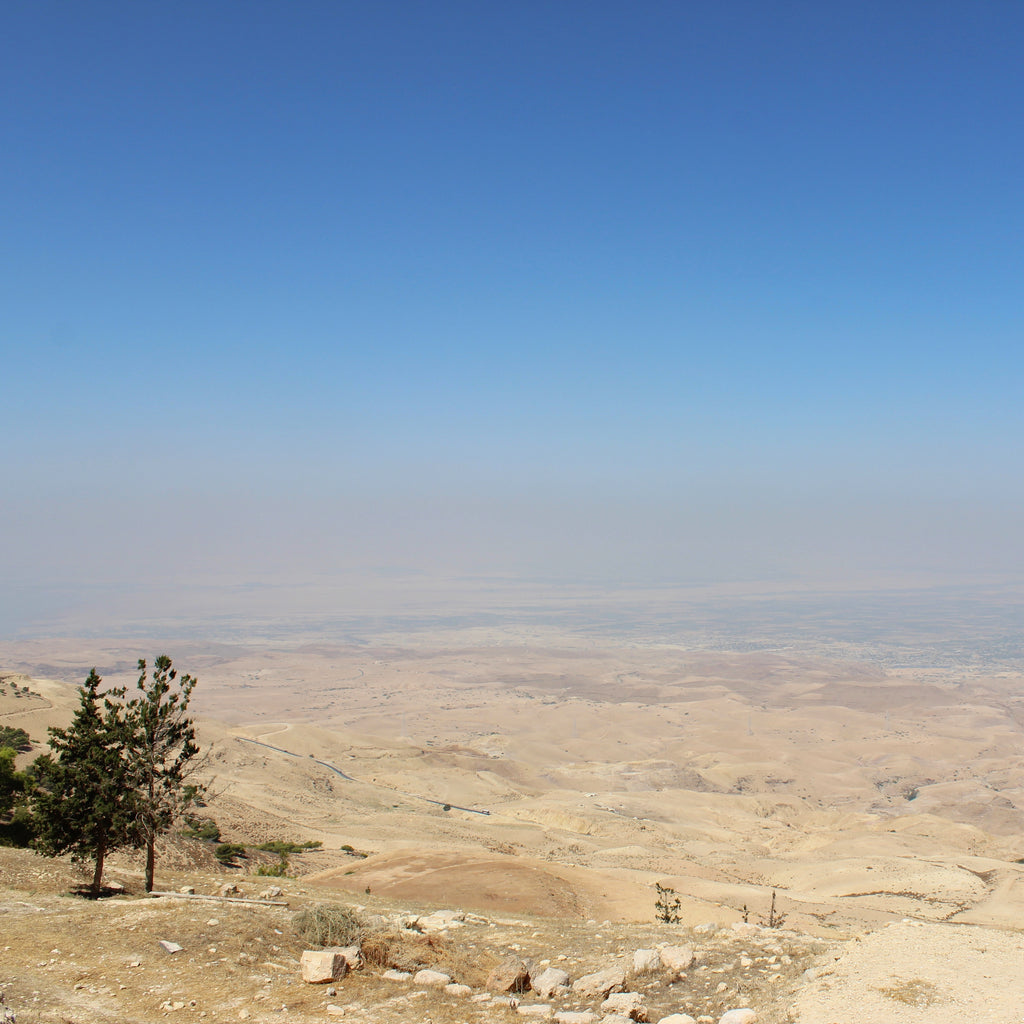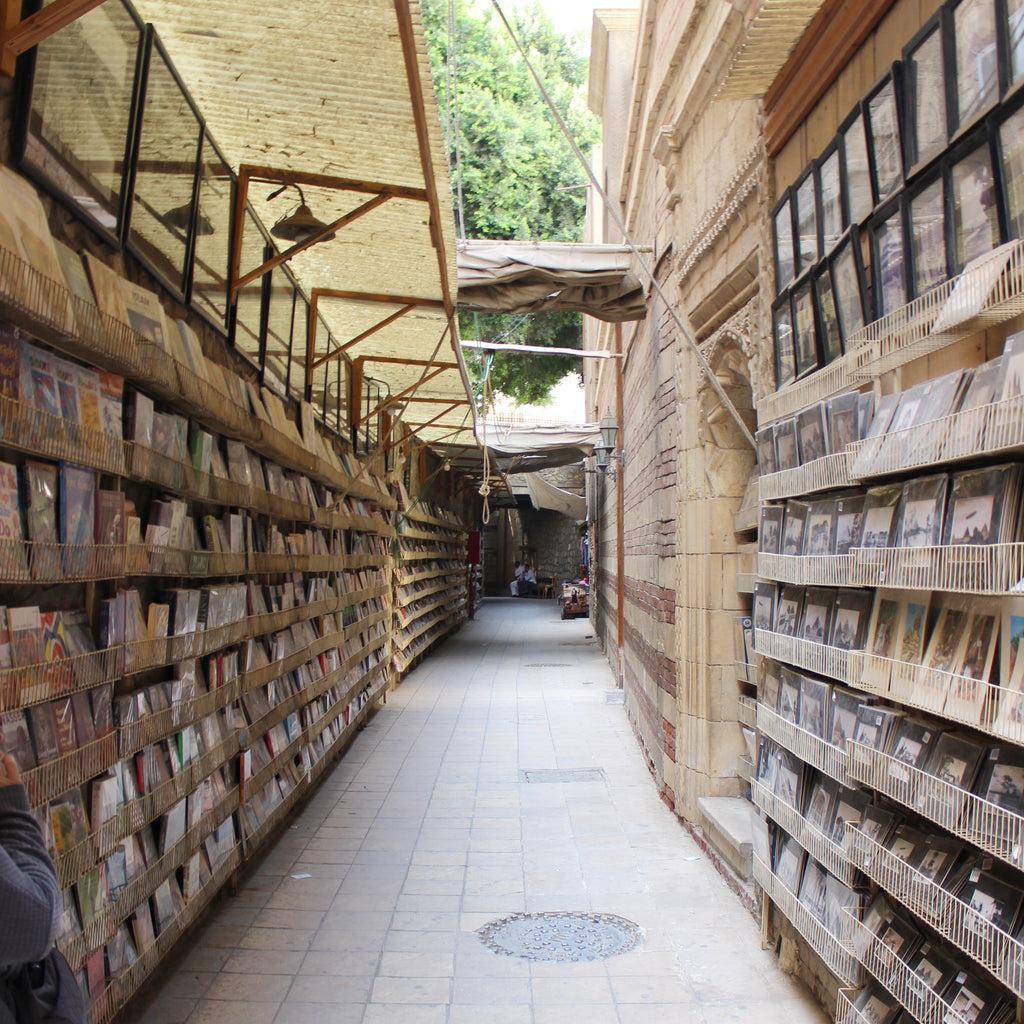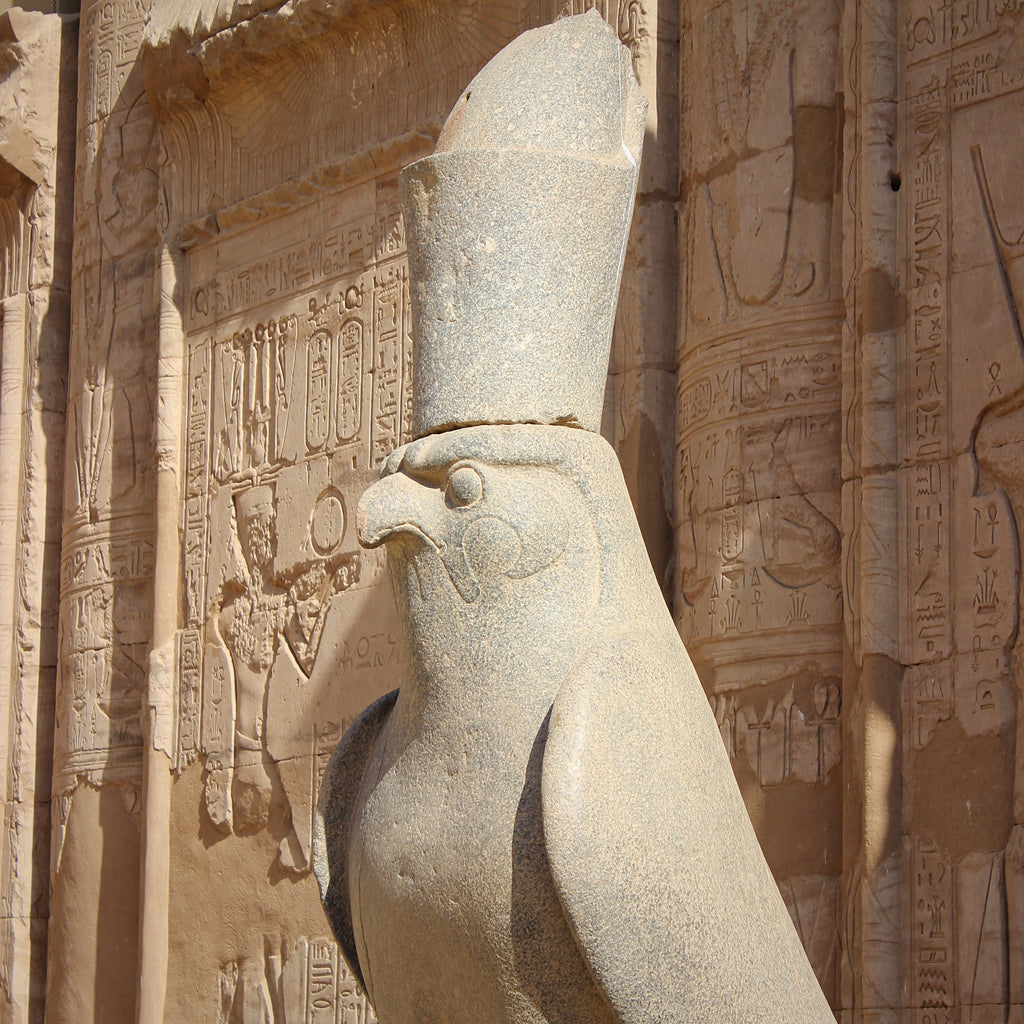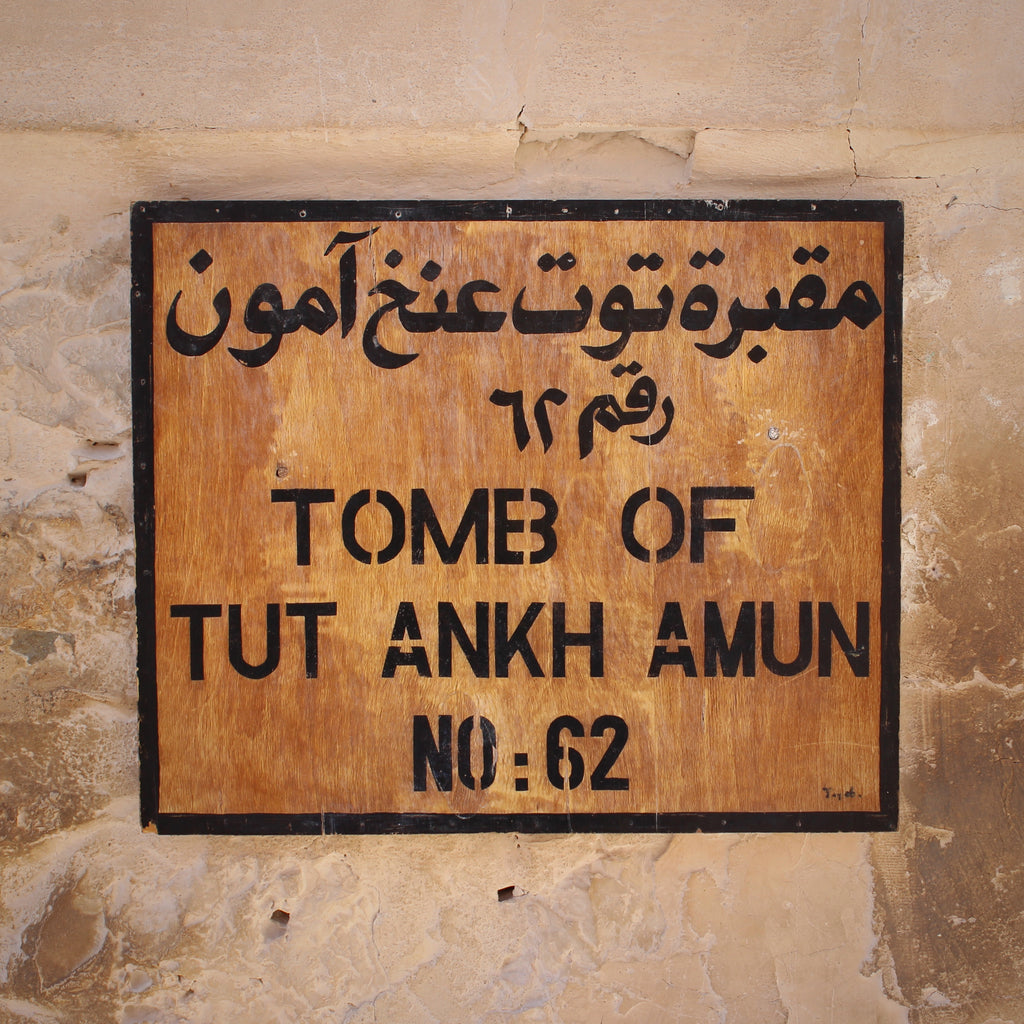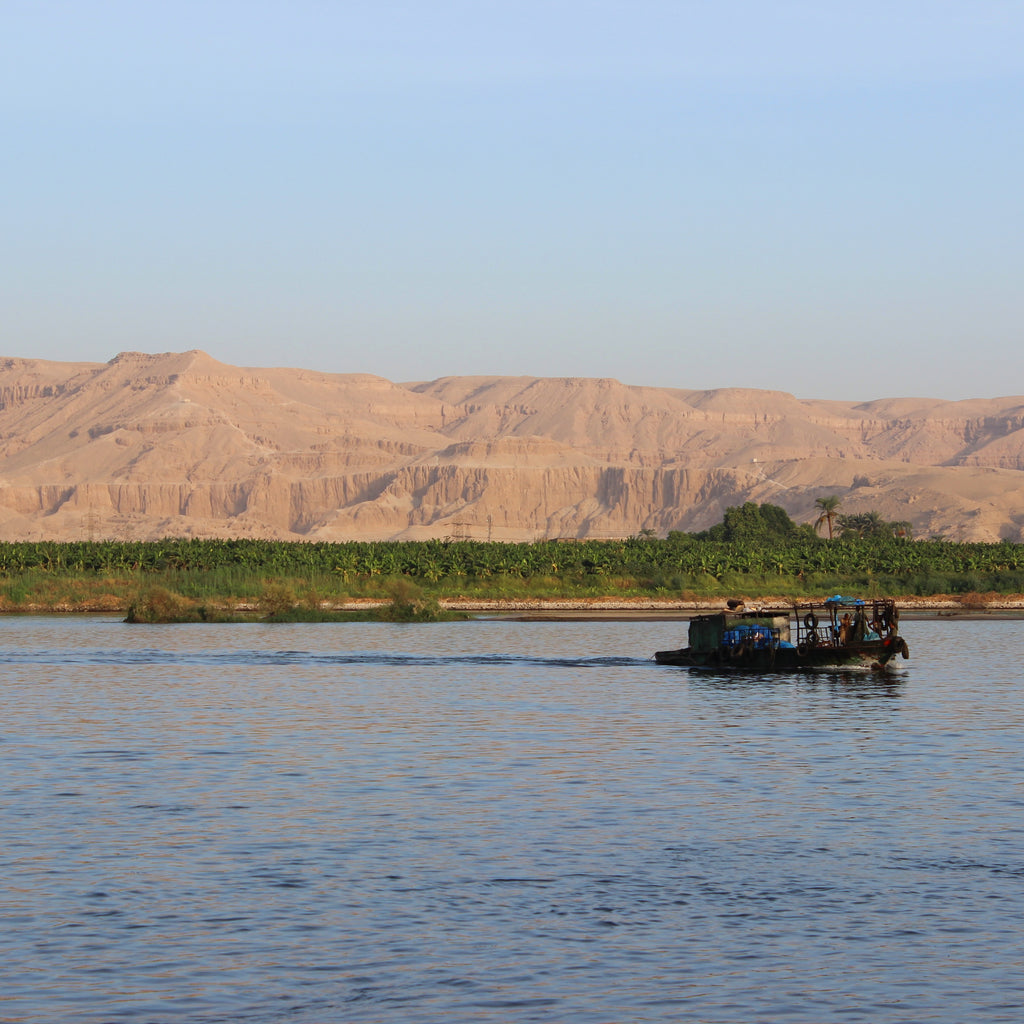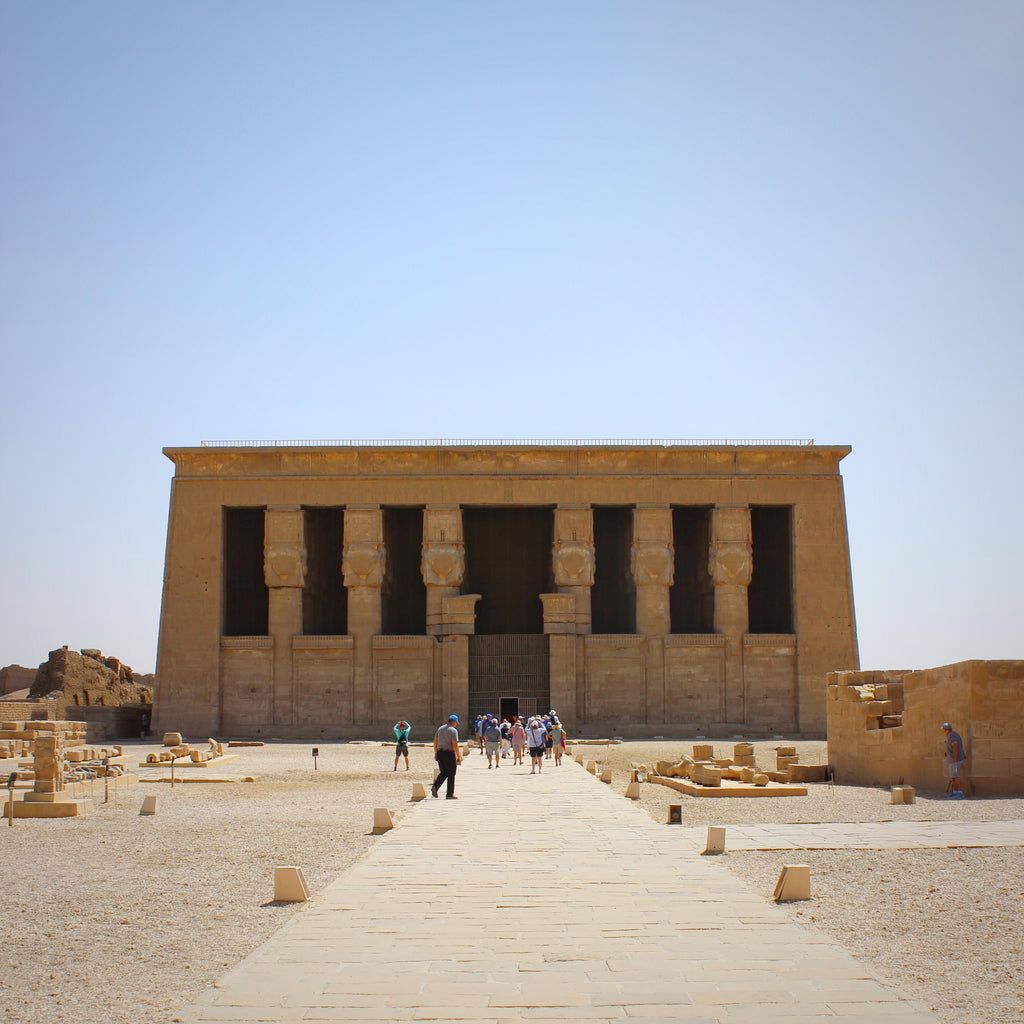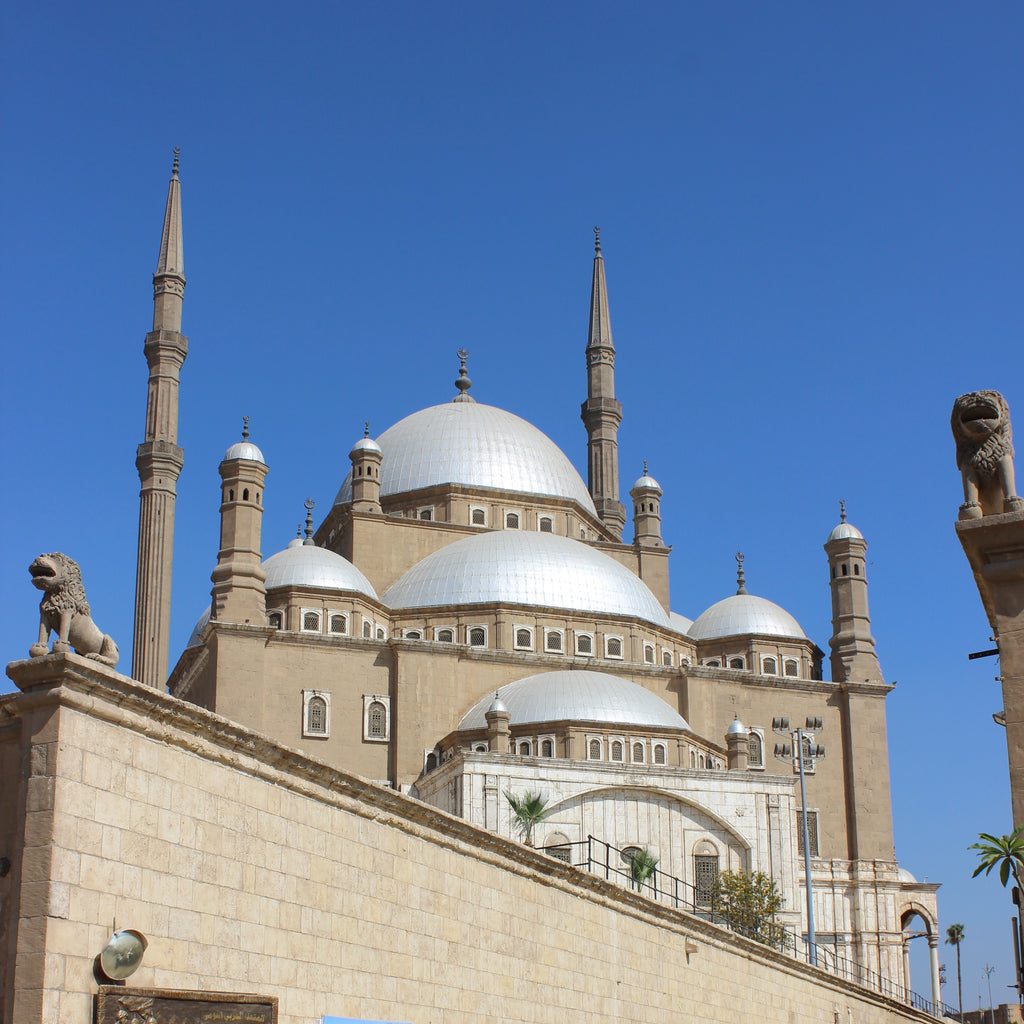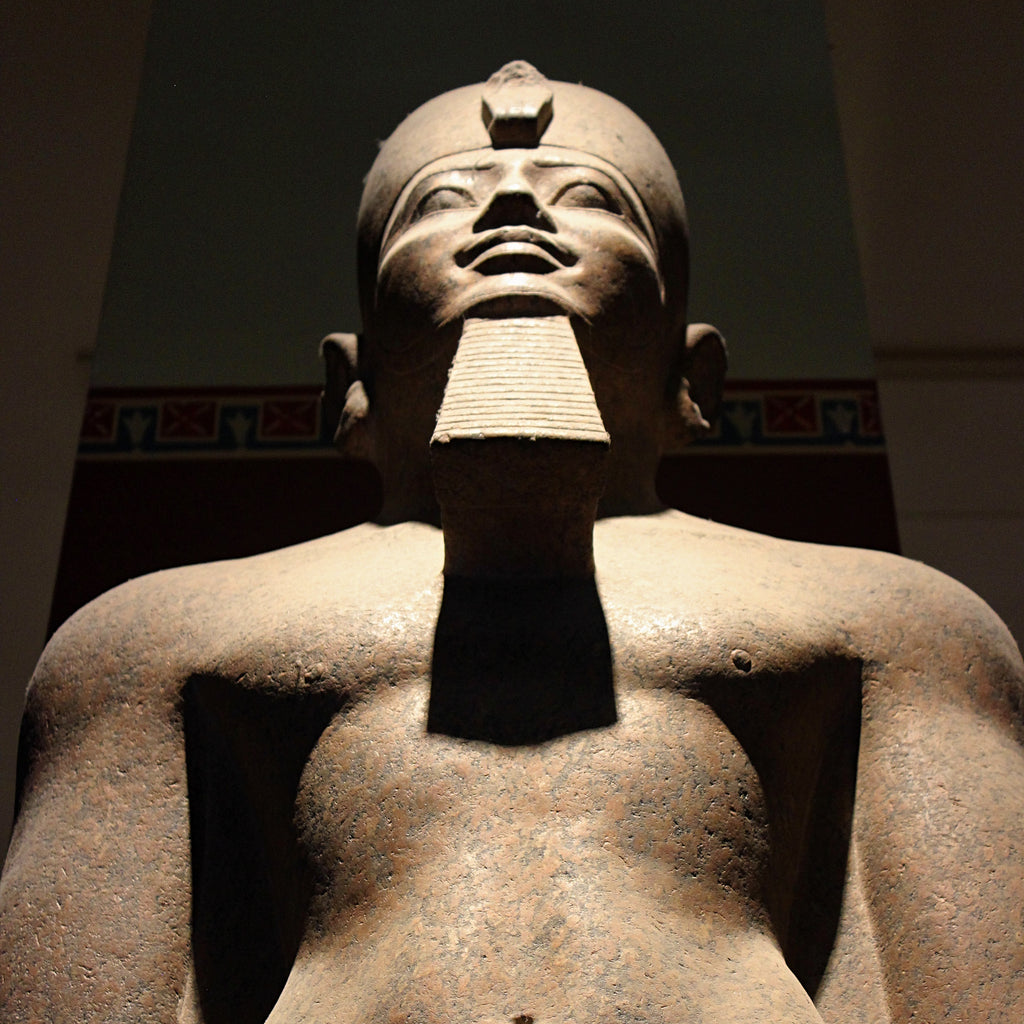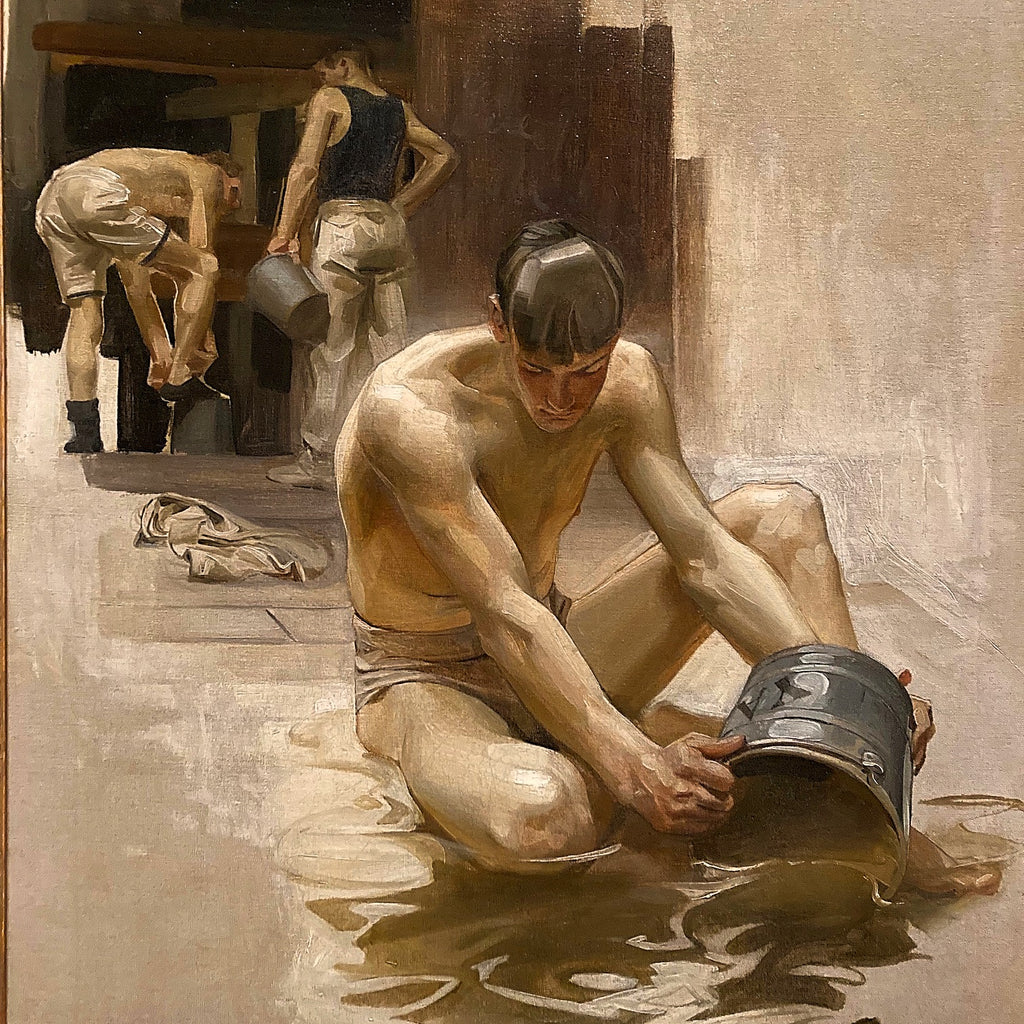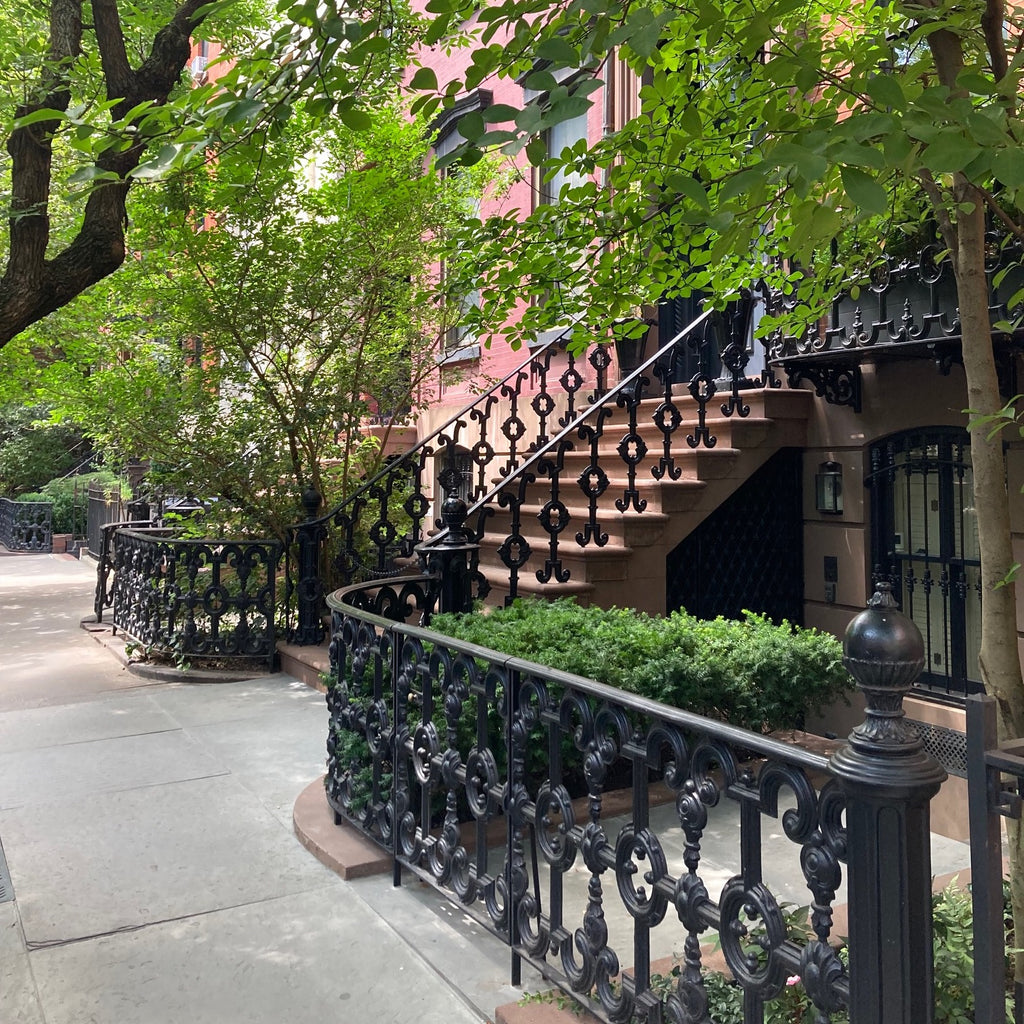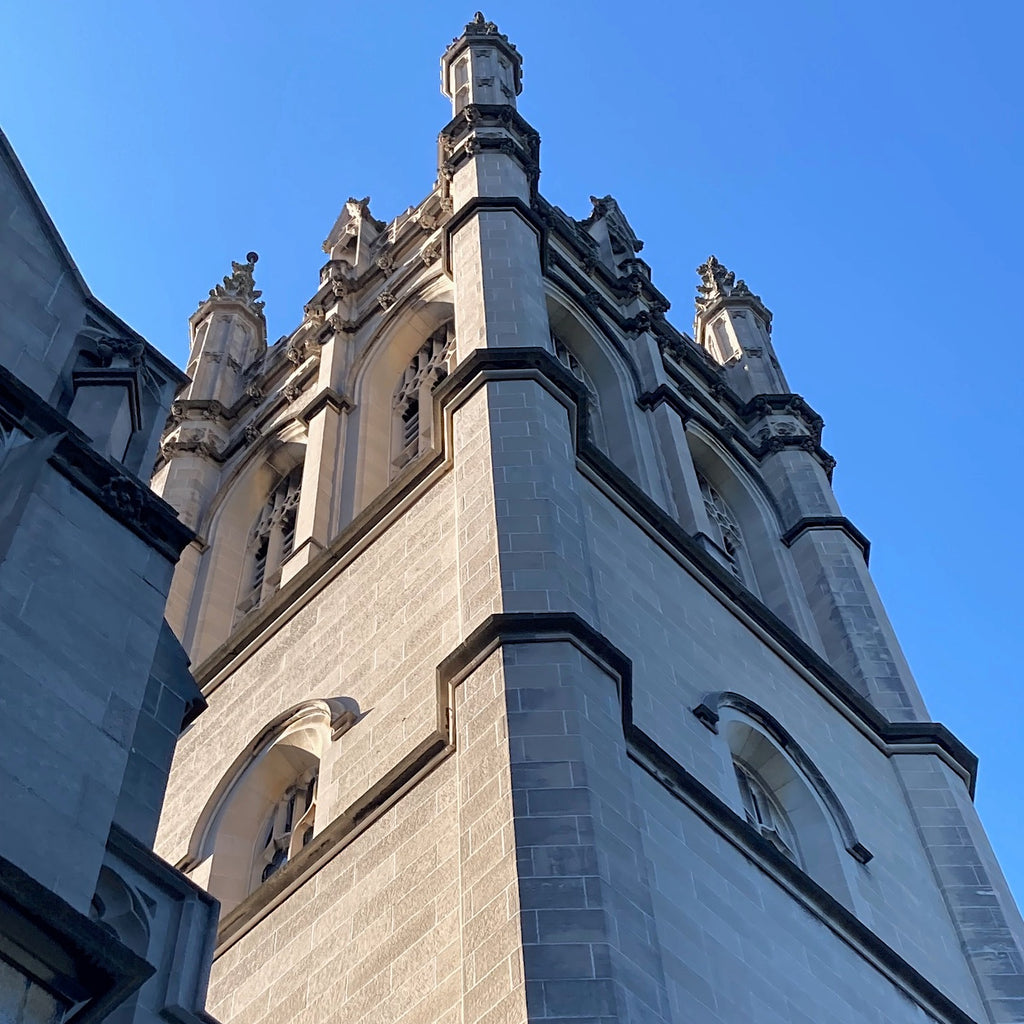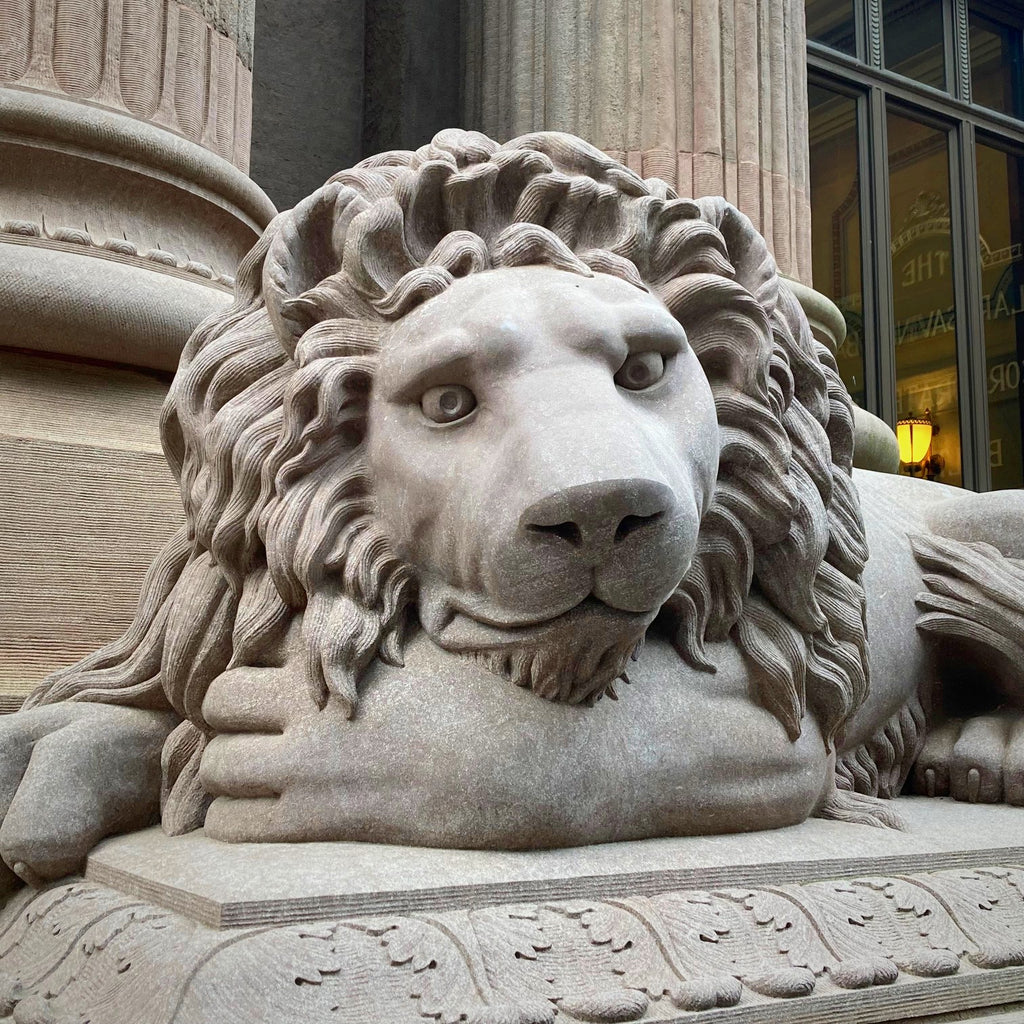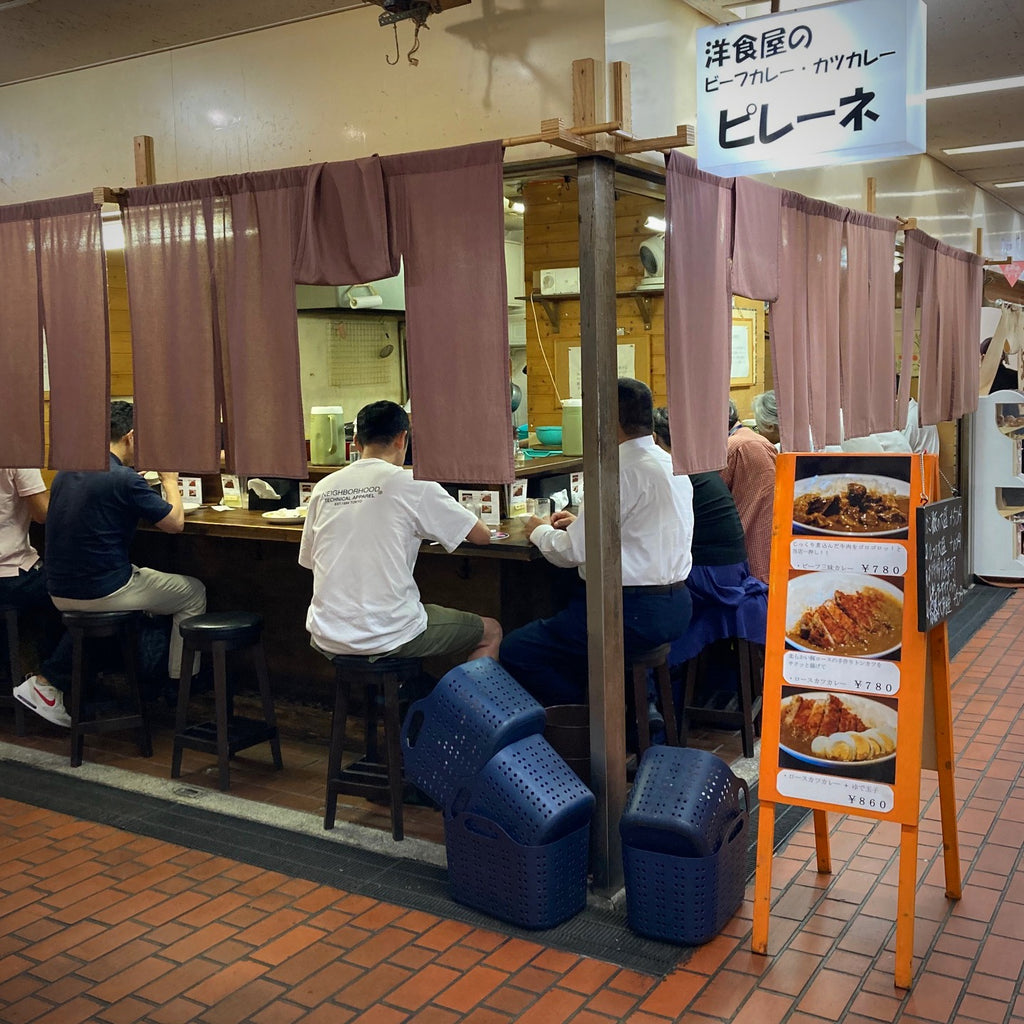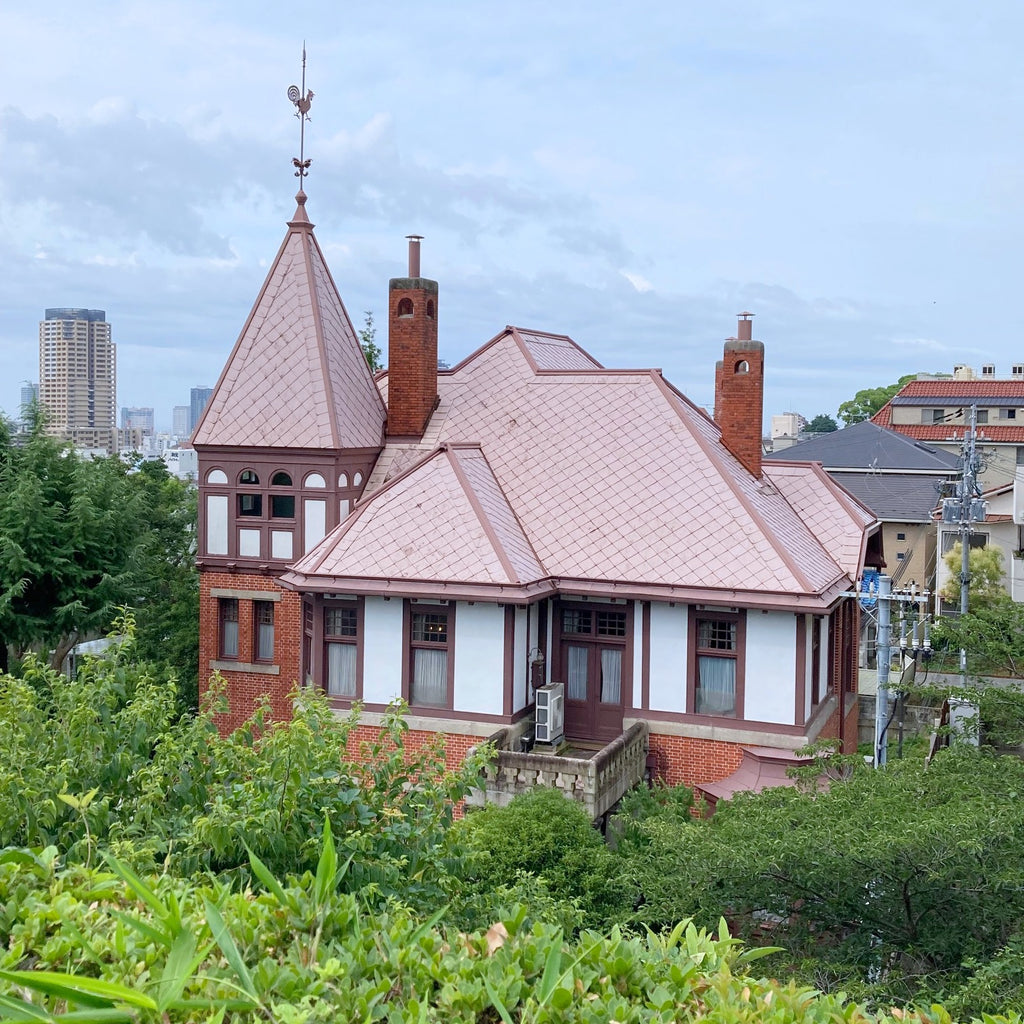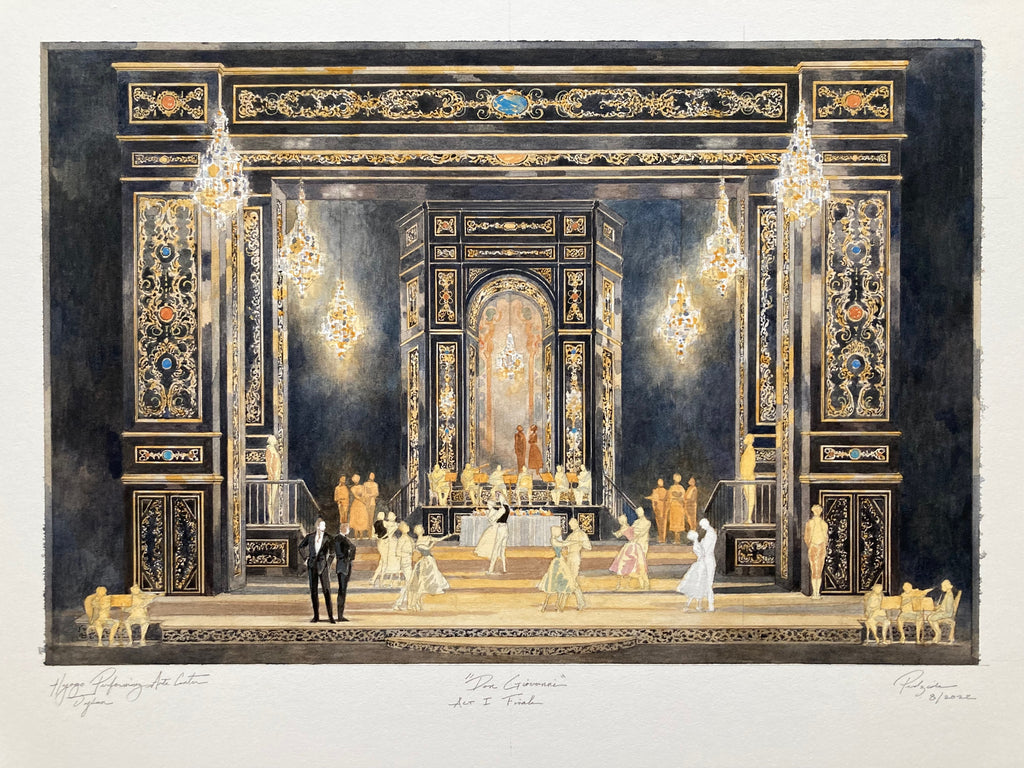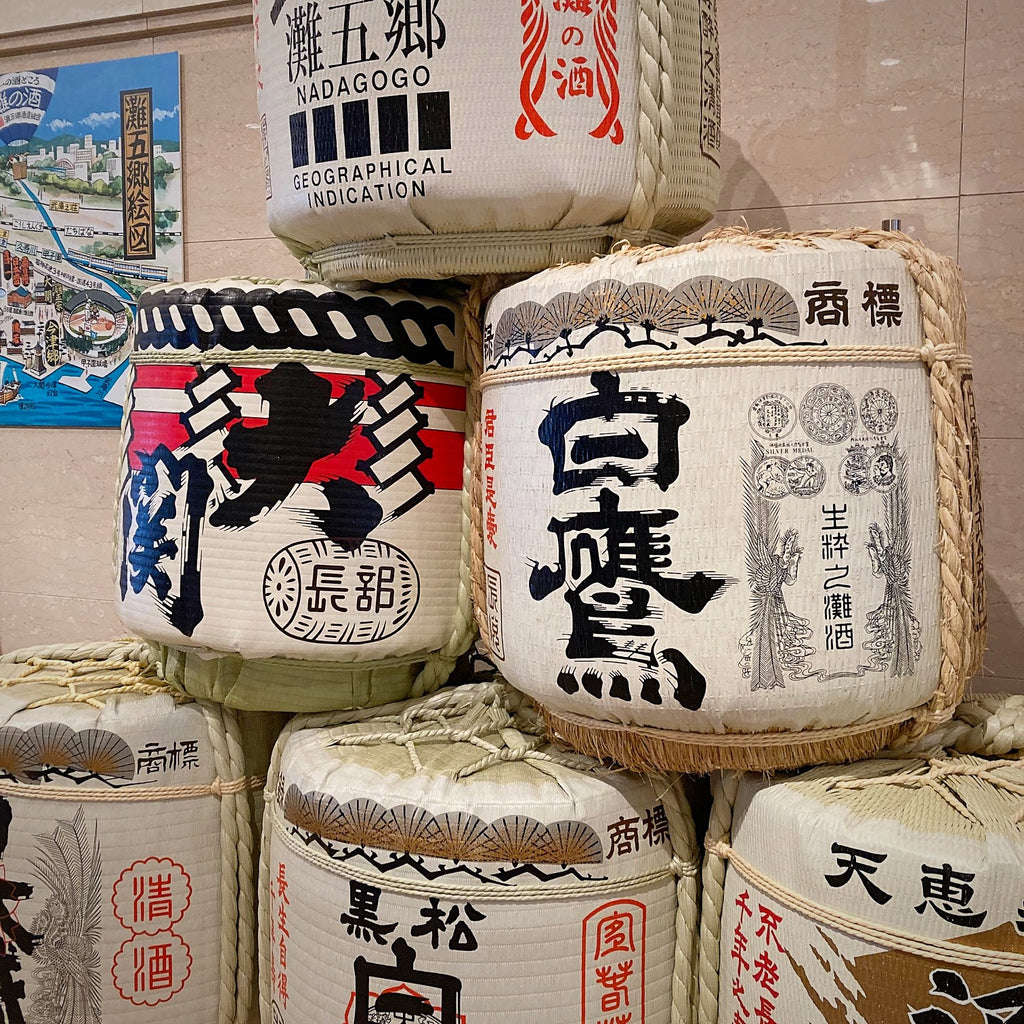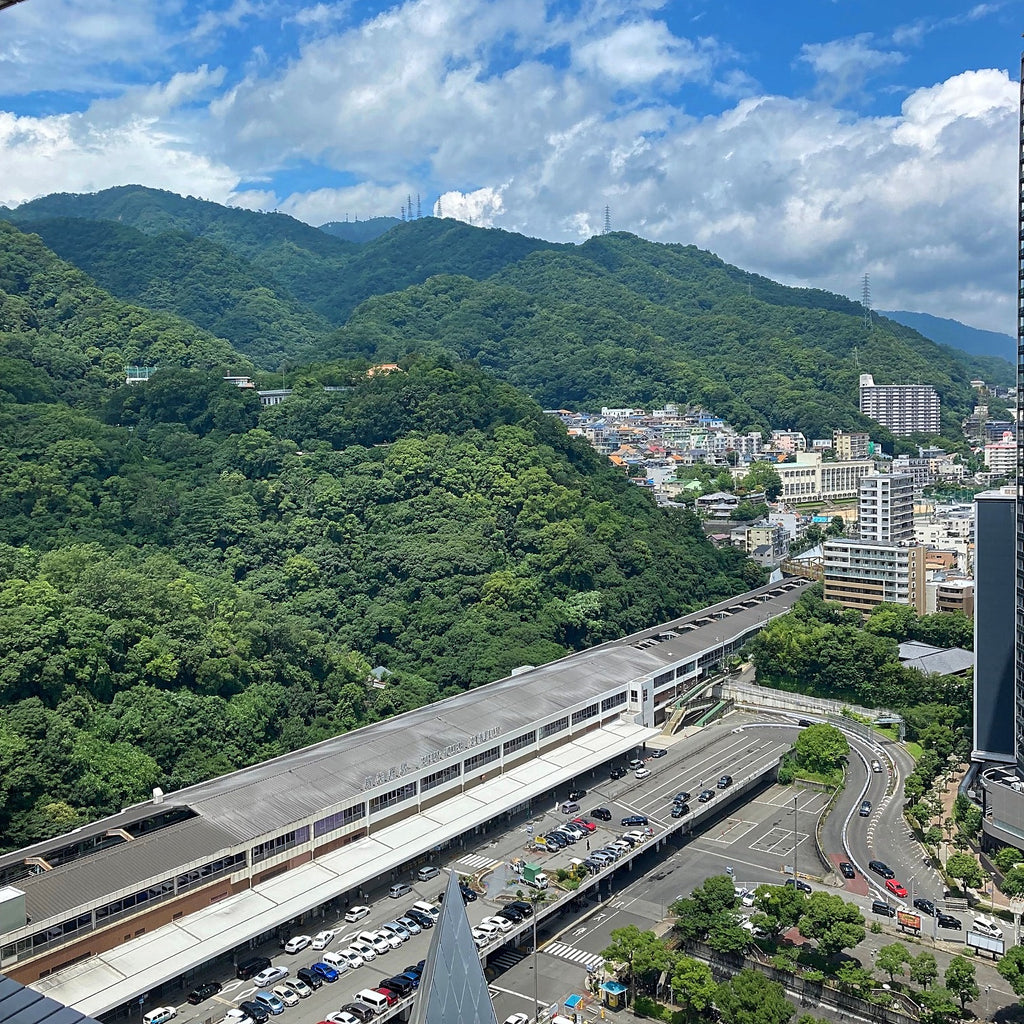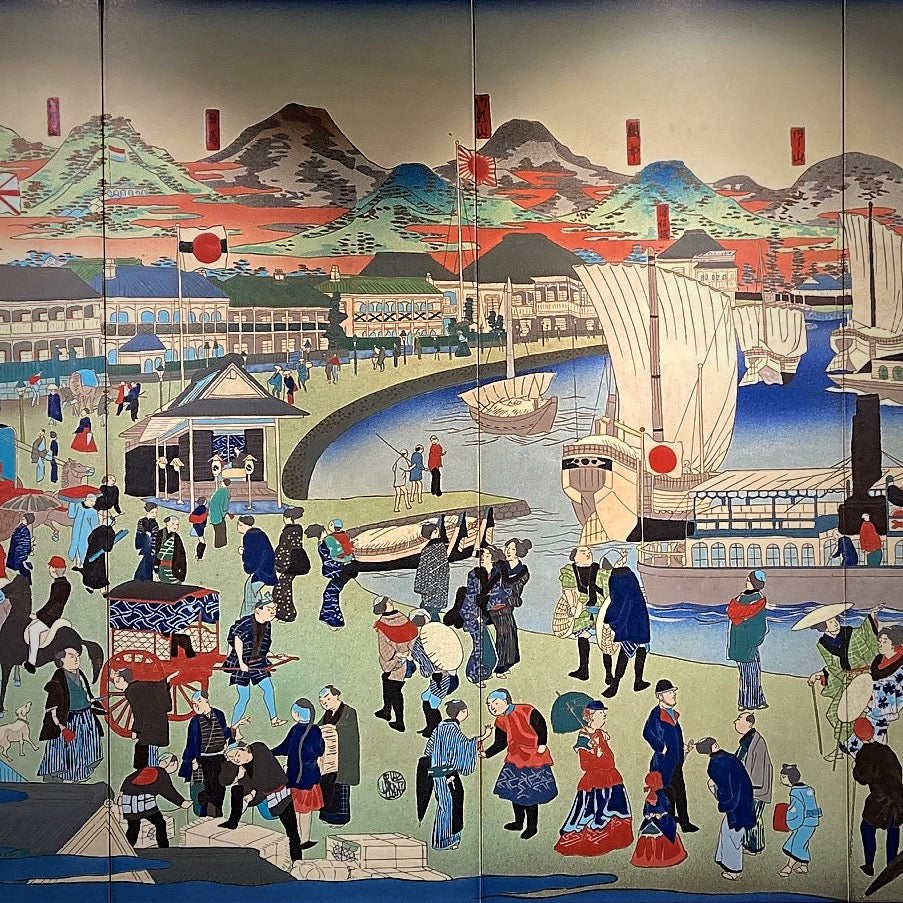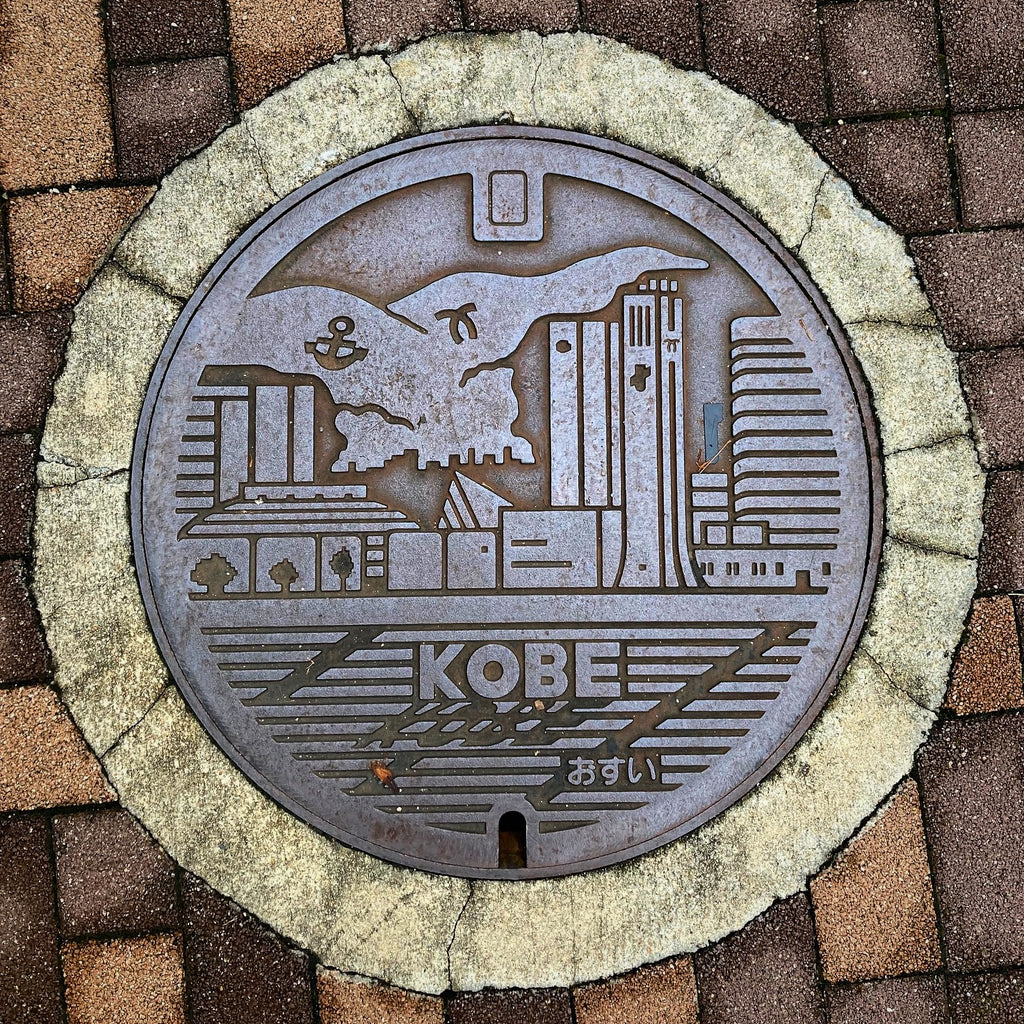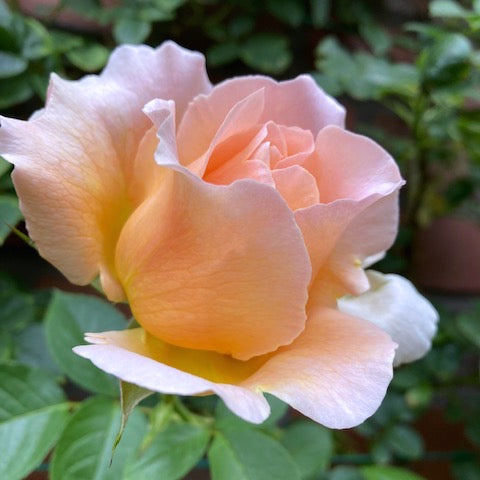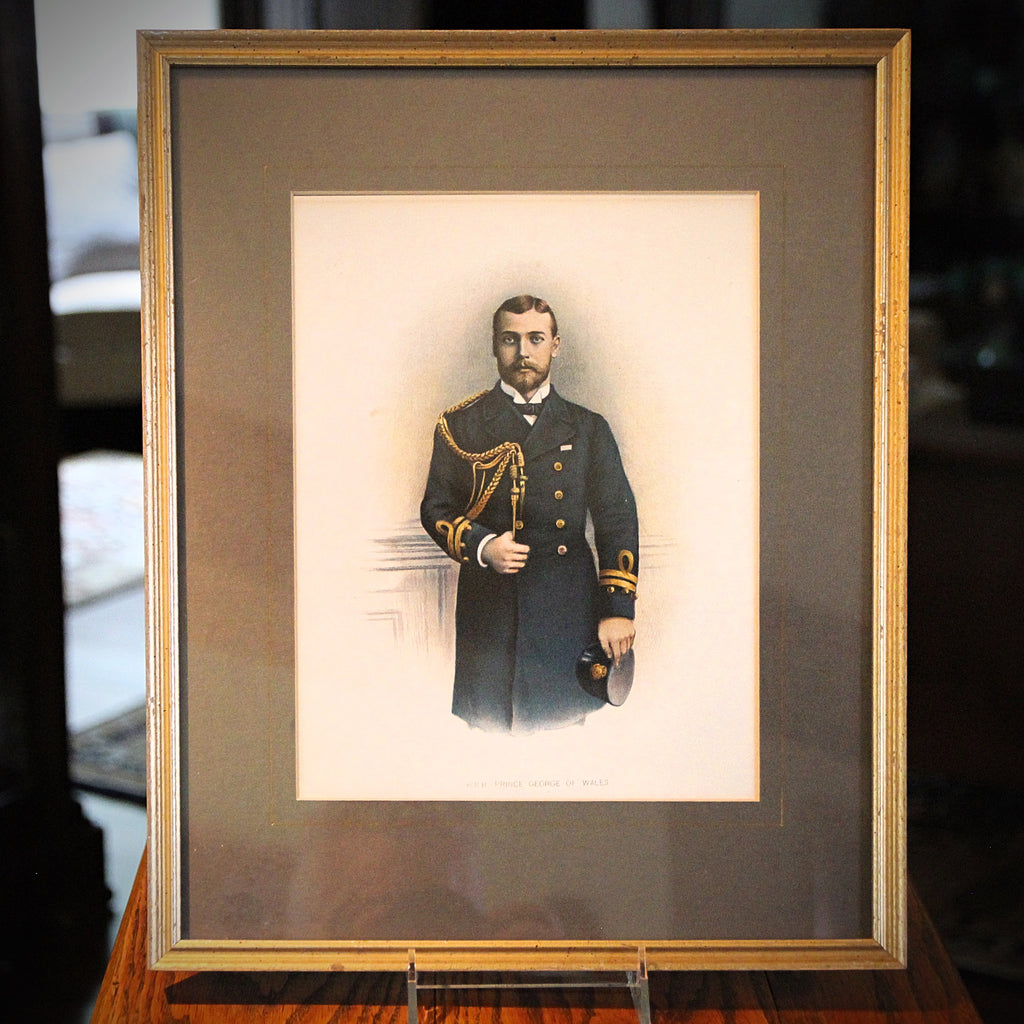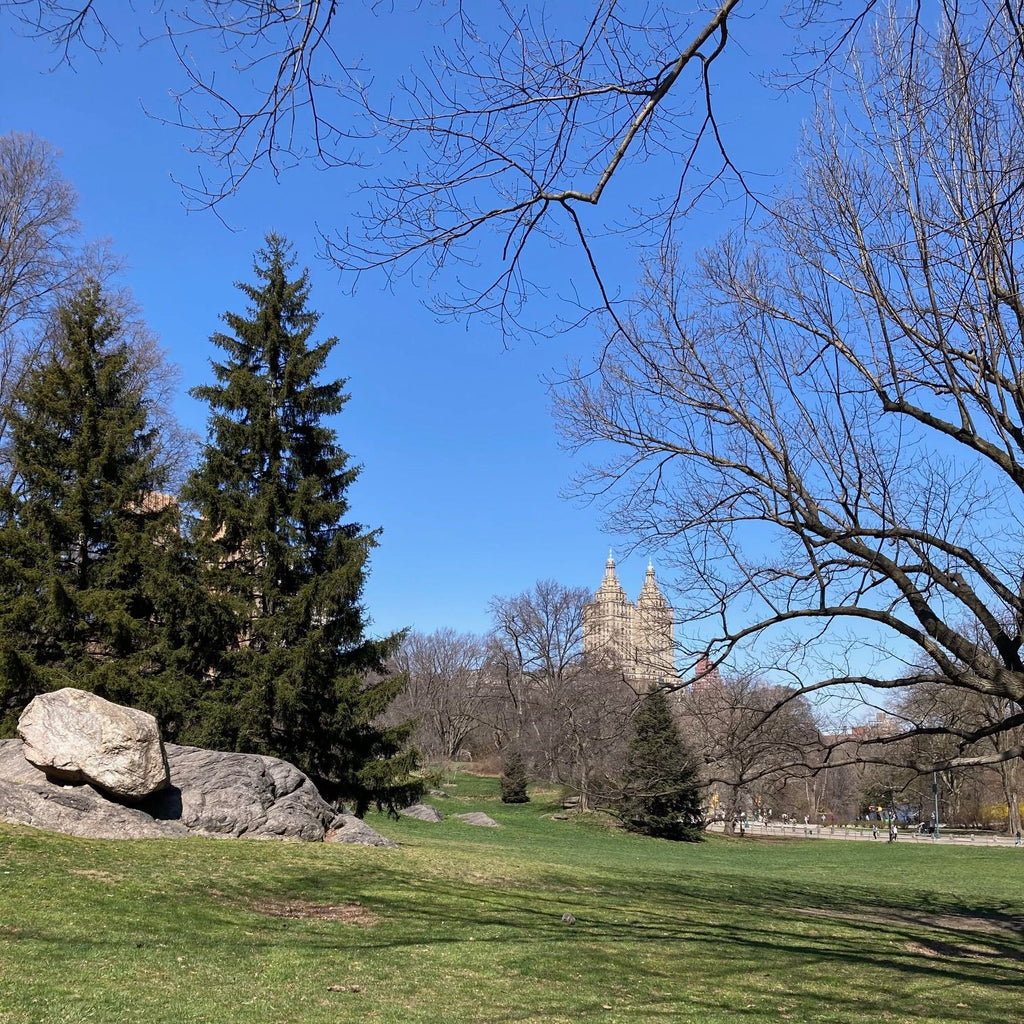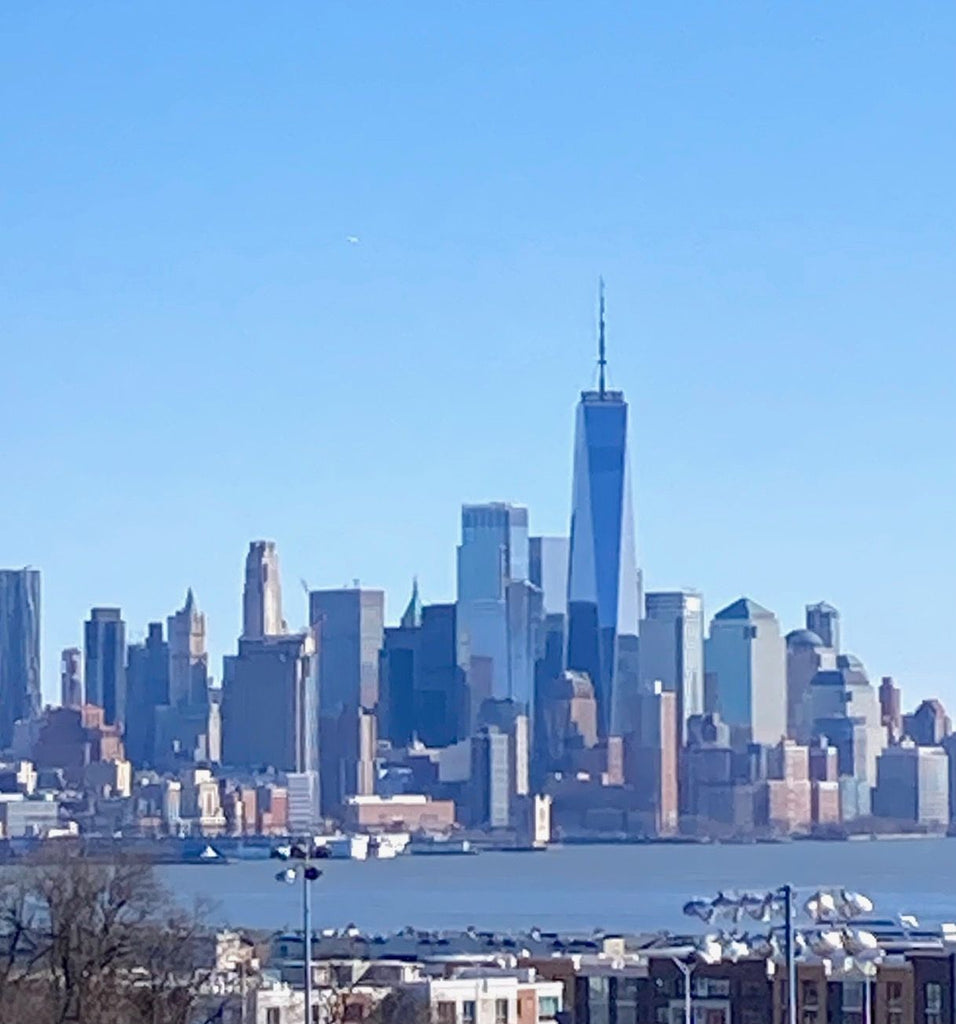JOURNAL — Assorted Thoughts RSS
Eighty-four years ago today, Japan attacked Pearl Harbor, which was the strategic American naval base in Honolulu, Hawaii. It was a bold and reckless move which awoke the sleeping U.S. giant—which previously had been trying its best to ignore the March of Fascism in Europe. This unexpected, early-morning onslaught ignited a succession of actions which (for good or bad) would define America (and the World) for decades to come. Within 24 hours of the bombing, President Franklin Delano Roosevelt appeared before a joint session of Congress, asking them to declare war on Japan. Legally, Congress (not the President) has the sole discretion of authorizing war—a constitutional fact which FDR observed. FDR began his address—broadcast nationwide—with, "Yesterday, December 7th, 1941—a day...
Autumn in New York - Part Nine
Divine Egypt is an exhibit at the Metropolitan Museum of Art. While I love Egyptian history, art and artistry, I find the pantheon of Gods and Pharaohs to be overwhelming—and confusing. There are so many characters to consider—both divine and human—and there are variations and permutations which add further complexity to the list of names. The Divine Egypt exhibit was helpful in that the artistic objects were clustered together according to the individual god or goddess—not chronologically, not by kingdom, and not by some other scholarly theme. In this way, I was able to "sort-out" and mentally compartmentalize the abundant beauty presented before me. At the entrance to the exhibit, we are greeted by a diorite sculpture of the god...
Autumn in New York - Part Seven
Emmanuel Radnitsky—better known as Man Ray—was born in Philadelphia in 1890. At the age of seven, his family moved to Williamsburg, Brooklyn. His family worked in the garment industry—even running a small tailoring shop in their home. He studied art and technical drafting and was offered a scholarship to study architecture which he declined. He chose to pursue art instead. His family, though disappointed, allowed him to convert his bedroom into an art studio. In 1921, at the age of 31, Man Ray moved to Paris where he would live and produce most of his art. He died in Paris in 1976 and is buried in the Montparnasse Cemetery. Man Ray always considered himself a painter, though he is known...
Autumn in New York - Part Six
Let's end our long tour of the Metropolitan Museum's Greco-Roman galleries with this showstopper: a Roman Third Century highly-carved marble sarcophagus. There are forty human and animal figures carved in high-relief. At center, Dionysos, the God of Wine, sits astride a panther. A satyr and other Bacchic figures surround him.
Flanking Dionysos, are four human representation of the Four Seasons, two on each side of him. Usually, such symbolic representations employ females. In this case, however, the sculptor(s) portrayed male youths. From left to right we have Winter (holding a brace of ducks), Spring (carrying a basket of flowers), Summer (carrying wheat) and Autumn (bearing a cornucopia of fruit).
Autumn in New York - Part Five
The Greeks (and then the Romans) made more than just handsome, masculine sculptures. They decorated their homes (and themselves) with beautifully-crafted works of art. Today, we'll share some of these items which we encountered in the Greco-Roman galleries of the Metropolitan Museum of Art. The Greek influence (called "Hellenization") was widespread. It spread in three distinct ways. First, the Greeks conquered many areas, physically moved-in, and asserted their culture through the subsequent colonization. Second, Greek artworks were sold, imported or traded to far-flung lands—even those which the Greeks did not colonize. These artworks had a strong influence on the aesthetics of the importing lands. And third, people like the Romans fueled "Greek Revivals" of Hellenistic art, culture, philosophy and social...
Autumn in New York - Part Four
The Metropolitan Museum has a wonderful and handsome wing full of Greek and Roman antiquities. The collection is wonderful—as is the presentation. Over the next couple of days, we'd like to share some of the Greco-Roman items which caught our eye in these galleries. Over the millennia, the "idealized" male form—as depicted in Western art and embraced in Western culture—has not changed much. True, there are a couple of "types." There is the lean, athletic body of a youth. And there also is the strong, muscular build of a mature man. These are two (idealized) representations of the same man as he passes through different stages of his life. Ancient sculptures of nude males look much like the idealized male...
Autumn in New York - Part Three
New York has frequently put advancement over sentiment. "Progress" over preservation. So many beautiful New York buildings have been torn-down, only to be replaced by something ugly—and that replacement is usually a pale comparison of the handcraft of the original building. Think of the fabulous Beaux-Arts Penn Station on Eighth Avenue. Or the Art Deco Bonwit-Teller Store on Fifth Avenue. Both architectural gems were destroyed to make way for cheap and ugly replacements. Neither could be called "progress."
But, even today, a stroll-about New York City always delights with unexpected architectural gems and architectural details. Sometimes these delights are big, sometimes they are small. And sometimes, thankfully, a community will insist that the historic past be restored and preserved.
Autumn in New York - Part Two
Central Park has been called "the lungs" of New York City. It is also a place of refreshment, regeneration and relaxation. It is surprising how one can feel totally enveloped by nature—and sometimes feel alone—while only minutes from a bustling city of 8.5 million people. This "dose of nature" has a profound civilizing effect upon those who encounter it. Of course, Central Park is a masterpiece of "Man and Nature." The park was highly planned and landscaped. But the genius intent was to create an artistic, naturalistic setting—one which took advantage of the slopes, ravines and boulders—to create the feeling of wilderness. I am always amazed at how many "little, private spaces," numerous nooks and crannies, have been created in...
Autumn in New York - Part One
Among the frights—while driving through the suburbs—is the proliferation of overwhelmingly-large Hallowe'en decorations which seem to have become en vogue in recent years. Lighted. Mechanized. Sometimes inflatable. These decorative investments demonstrate the growing love Middle America feels for All Hallow's Eve. A recent Ipsos poll has revealed that one-in-three Americans name Hallowe'en as their favorite holiday. We drove to New York today and will spend the week here. I have found that Hallowe'en may be even bigger in Manhattan! Though the "front yards" are considerably smaller, the ghoulish intentions of the inhabitants are just as evident. In fact, New Yorkers may win extra points for home-crafting their displays—no plug-in Home Depot erections here! And, of course, the question remains, "Where...
Chrysanthemums for November
Welcome, November, and your birth flower, the Chrysanthemum. Chrysanthemums (sometimes called "Mums") are associated with the Autumn, when the perennial typically blooms. There are tens of thousands of varieties, cultivars and hybrids—and they have been developed by mankind for thousands of years. The flower originates in East Asia and it was the Chinese who began cultivating them (circa 1500 BC). They made their way to Japan in the Fifth Century AD, and it was here that their intense cultivation reached the greatest heights. Japanese art and culture frequently reflects nature which has been "perfected" through careful and thoughtful adaptation, editing, rearrangement or human manipulation. Think of zen gardens, koi fish, bonsai, or ikebana. The same is true of chrysanthemums, which...
Kauai-Bound - VII
All good things must come to an end, including vacations and time with family. On our last morning on Kauai, we took a short hike with my sister-in-law, Kristen, and my nephew, Levi. The trail began not far from my dad's house. It was an easy, five mile trek and the views were amazing! Shown above, Mount Makaleha, which, at 3,200 feet high, presides over the town of Kapaa. Translated literally, Makaleha means "to lift-up one's eyes" as if to gaze upon something beautiful. When viewed from a greater distance, Makaleha seems to be the smaller sister of the bigger Mount Waialeale (5,142 feet tall)—which stands at the center of Kauai. Usually shrouded in clouds, it is called (by locals)...
Kauai-Bound - VI
Taro—known as "Kalo" in Hawaii—is a tropical bulbous tuber that was a staple food source for the Ancient Hawaiians. The fleshy tuber is not a root; it is a "corm," a thickened part of the underground stem which holds stored energy for the plant's survival (should water or nutrition become scarce). The plant is believed to have originated in India, Nepal or Bangladesh—and spread (by voyagers) throughout Southeast Asia, Oceania and Africa. It became a nutritional staple wherever it was grown. There is archaeological evidence of taro consumption in the Soloman Islands 20,000 - 28,000 years ago (though it cannot be confirmed if that taro was wild grown or cultivated). British explorer, Captain James Cook, observed sophisticated taro plantations in New...
Kauai-Bound - V
For thirty-five years, Bob and I, together, have been visiting my family on Kauai. We always stay with my father. This year, as a treat, we decided to book two nights at the Grand Hyatt Poipu. We have long been familiar with this hotel. Usually, we would walk through the property's gorgeous lobby to get to Shipwrecks Beach—or we would buy passes to work-out at the hotel's gym. Sometimes we would eat in one of the hotel restaurants. But we had never booked a room. We did this time and, boy are we glad to have done so. The hotel is very nice. It certainly has grandeur—though it is grand without a trace of glitziness. Every element of the hotel...
Kauai-Bound - IV
Hawaii has beautiful beaches. When I go to the beach, I want to see water, sand and mountain cliffs—preferably squished-closely together. Hawaii doesn't disappoint in this regard. But, as I've gotten older, I have grown more wary of too much sun exposure. Now I bring along my father's beach umbrella. And I spend no more than 90 minutes at the beach. I prefer to go every day, for short visits. And I always go home with an enviable tan (and no burn). North of Kapaa, where my family lives, is a secluded, remote beach called Donkey Beach. Apparently, it is the area where the sugar plantations once housed their donkeys. Getting to the beach involves a short, rocky hike. The...
Kauai-Bound - III
My father celebrated his 90th birthday two days ago. Though we have had celebratory meals every night this week, tonight, Saturday, we gather for the big party. My father was born in Boston's Chinatown in 1935. His father, a Chinese immigrant from Canton, married an American waitress at the restaurant where he worked. My father grew-up in a poor, working family. Like most immigrants, his father worked hard (for little pay) to ensure that his descendants had a chance at a better life. My dad seized that opportunity. He frequently reminded us that kids who are smart, hardworking and poor can succeed. He got good grades in school and got a scholarship for Sufflok University—where he met my mother, a...
Kauai-Bound - II
Gazing upon the rugged and romantic Na Pali Coast, along the North Shore of Kauai, never becomes tiresome. Most of the island is encircled by roadway, except for this stretch between Ke'e Beach and Polihale State Park, which is inaccessible to vehicles. Seeing it from the trailway, which runs along some of the coastline is enchanting enough. Seeing it from the sea—by boat or helicopter—is even more stunning. Na Pali has provided a ravishing backdrop for many films including Jurassic Park, King Kong, Pirates of the Caribbean, and many others. "Na Pali" means "the cliffs." They were formed five million years ago and have been carved into valleys by the flow of water. The original people who came to Hawaii—first...
Kauai-Bound - I
I have the great, good fortune of having two parents in their Nineties. My father turns 90 today and I have made the 5,000 mile trek to Kauai, Hawaii, to celebrate the occasion with him (and my three brothers). Nothing pleases my father more than to have his four sons, their partners, and his four grandchildren gathered 'round a table. Considering that his parents never made it out of their Sixties, such a milestone is a blessing, indeed. People often ask me, "How can you stand such a looooonnnnng flight? I would love to go to Hawaii, but I can't bear the thought of spending all that time in an airplane." I remind them that the first New Englanders to...
24 Years On
So much can happen in 24 years. So much can happen in a moment.
For me, time is starting to blur. The day itself, 11 September 2001, remains crystal clear—and it probably always will. I remember, like yesterday, my feelings and the surge of neurotransmitters—those helpful brain chemicals which heighten awareness, quicken response time, and prepare one for a "fight or flight." And, yet, how can 24 years have passed since that day? So much has happened; so much has changed. Friends and family have been born. Friends and family have died. Democracy has rallied. Democracy has flagged. Hope has flourished. Hope has been dashed.
LEO is Thirty
On 28 August 1995, LEO Design opened its doors for the first time. It feels like only yesterday . . . What started as a shoestring operation grew in time. There were thousands of (unpaid) hours logged and more than a few lucky breaks along the way. Nothing would have happened without wonderfully supportive customers. And, most of all, we built a staff that exceeded every expectation I could have envisioned. My staff made the business work; they befriended our precious customers; many of them have become dear friends—even to this day. LEO Design premiered at 413 Bleecker Street. At the time, Bleecker Street was unselfconsciously (and unapologetically) "mom and pop." There was a pet bird shop (which later became...
Sargent's Travels
John Singer Sargent led a remarkable life. Not only was he preternaturally talented (as a draughtsman and painter) but he pursued his art by traveling to wonderful places. His deserved reputation as the finest portraitist of his time opened doors belonging to the rich and famous—many of whom would become social acquaintances, if not good friends. He befriended, travelled with, and captured on canvas some of the most interesting artists of his day. He also painted compelling and beautiful "everyday people" on his trips around the world: Italy, Spain, North Africa, America. His talent as an artist—and his alacrity in diverse social environments—provided a wonderful life for a man who aimed to live life to the fullest. Wouldn't Sargent have...
Sargent's Artist-Friends
One of the great blessings of being an artist is having friends who also are artists. Young (broke) artists can sit (gratis) as models for their friends. They can give pictures to their friends. Or they can trade works with their friends—thereby growing their collections and creating works which will have great historical importance in the future. John Singer Sargent was blessed with many artist-friends—many of whom he painted for pleasure (not as commissions). Shown above, an experimental double portrait of two friends of Sargent's, both French artists: François Flameng and Paul Helleu (c. 1880). It may have been inspired by a work by Frans Hals, The Banquet of the Officers of the St. George Civic Guard (1627) which Sargent...
Approaching Madame X
Madame X is, perhaps, John Singer Sargent's most famous painting. It is certainly his most notorious. Sargent kept it in his personal collection for 32 years, hanging it in his studios in Paris and London and exhibiting it occasionally. In 1917, he appealed personally to the director of the Metropolitan Museum of Art, imploring him to purchase the painting for the museum, saying, "I suppose it is the best thing I have ever done." They purchased the painting. Sargent breathed a sigh of relief, knowing that Madame X should now be well-protected. When I moved to New York City in 1990, the Metropolitan Museum still was (shamefully) hanging Madame X in a back stairwell. As mentioned previously, the academic art...
Sargent's Women
For a long time, John Singer Sargent was recognized principally for his society portraiture. He was the greatest portraitist of his time and he made his living painting pictures of wealthy people. He charged his patrons up to $5,000 for a picture (equivalent to $190,000 in today's dollars). Alas, it was this portrait work which would be disparaged by "academic elites" in the Modernist Era (educators, curators, art dealers, and jealous artists who lacked Sargent's technical brilliance). They viewed Sargent as "simply" a talented technician who painted flattering pictures of rich social climbers. It is probably truthful to say that, for this kind of money, the subjects wanted something impressive to hang in their dining rooms. But Sargent's oeuvre included so...
Sargent's Men
We came to New York City back in June with two purposes in-mind: to attend our dear friend, Anne Kaufman's, memorial service and to see the Singer & Paris exhibit at the Metropolitan Museum. (Had Anne still been alive and mobile, she most certainly would have come to the exhibition with us.) We succeeded on the first goal; it was wonderful to see Anne's friends gathered-together in her honor. But, on that Wednesday morning, as we walked-up to the museum, we were confronted with the big red signs: "The Museum is Closed on Wednesdays." During all my years living in New York, the Met Museum was always (and notoriously) closed on Mondays! We were so close! And, yet, we were...
Broadway Nouveau
We have just acquired a handsome collection of Art Nouveau theatre programs, mostly printed between 1911 and 1919. They are a treasure trove of period design inspiration: the beautifully illustrated covers, the bold advertisements, the graphic layout of the title pages—even the styling (and the content) of the "editorial articles." Several of the programs come from 1918—the last year of The Great War and the year American forces joined the fight. As a result, many of the advertisements within those programs have patriotic or military-themed designs.
Independence Day
Today we celebrate America's independence from England—hard-fought and won at a bloody price. But was that the end of the struggle? Or does the fight for independence continue? And exactly what is the "Independence" which we seek and celebrate?
America's journey toward Democracy—an expanding and comprehensive Democracy—is far from complete. And, perhaps, it never will be finished. Today we are witnessing that American Democracy may be more fragile than we previously had realized. While some eras in American history favored Democracy, today we are at risk of losing it.
Back in the City - III
For most of my adult life, I have lived in apartment buildings. If you count college dorm rooms, I had lived in an apartment for 35 years before moving into a house. Houses provide space, most importantly walls for hanging art and building bookshelves. They also (sometimes) are surrounded by garden space. Houses also provide isolation, though this feature is less important to me. Apartments, on the other hand, provide convenience (the Superintendent is a phone call away). Apartments also are green and cost-effective—which, I suppose, is the benefit of their "economies of scale."
To my taste, the most "alluring" apartment building in New York is The Dakota. But The Apthorp has always been appealing, too.
Back in the City - II
The second "major event" of this week's trip to New York was to see the Sargent & Paris exhibition at the Metropolitan Museum of Art. I love John Singer Sargent. After my husband (Bob), Sargent (1856-1925) is my favorite artist who lived in the Twentieth Century. When I first moved to New York in 1990, I was horrified to discover that the Metropolitan Museum was hanging Madame X—possibly Sargent's greatest painting—in a stairwell. In a stairwell! This notorious painting, exhibited at the Paris Salon in 1884, caused such a scandal (in Paris!) that Sargent eventually moved from Paris to London in 1886. He lived with the picture in his private collection for three decades until 1916, when he appealed to...
Back in the City - I
We've come back-to-the-City, just for a visit. Boy do I miss it. Every. Single. Day. We've been here for a few nights. A couple of events top our agenda. First, we attended a memorial service celebration for our dear friend, Anne Kaufman. It was held in a fourth floor function room at Sardi's, a restaurant in the theatre district. The photo shown here was shot out the restaurant's window. Anne died this past March at the age of 99—just 102 days short of her 100th birthday! Anne was the daughter of the American playwright George S. Kaufman. She was full of stories: about her colorful girlhood, about her father's colorful affairs, about the colorful stars and artists she knew from...
Twelve Years of Love
It was the best of times. It was the worst of times. Here's the story. Twelve years ago—it was a Saturday afternoon, 23 March 2013—my husband, Bob, called me. I was in the shop on Hudson Street. "Can you come to see a puppy I found?" He was in a different shop, on Christopher Street, a couple of blocks away. He had just found a delightful little apricot Miniature Poodle. We had casually discussed expanding our family (with a dog), but had taken no concrete steps to make it happen. I left the store in the capable hands of two employees and rushed over to the shop. I, too, fell-in-love. Not wanting to be rash, I suggested we put...
23 Years Ago
I remember the day so well. I had grabbed my gym bag, kissed my spouse, and was heading-out-the-door. Off to the gym, then to my store on Bleecker Street. And, oh! It was Election Day! I needed to go to the polls first. An announcement on the radio: "WNYC has just received reports of an explosion of some kind at the World Trade Center. Stay tuned for more information." Instead of taking the elevator down to the street, I took the elevator up to the roof. The building's Super, Manny, was the only person up there. He was hosing down the roof deck. It was a beautiful, crystal-clear day. New York days did not get better than this. We looked...
Juneteenth
What does "Freedom" mean? Poets, scholars, philosophers and theologians have been arguing the word's meaning for centuries. And it's possible that different people may hold a differing definition of "freedom" in their hearts. Nevertheless, freedom is important to all people, however they may define it.
In one very important way, on this day in 1865, America took another step toward its promise of freedom. Federal troops arrived in Galveston, Texas, to enforce President Lincoln's executive order, The Emancipation Proclamation—which had become effective a year and a half earlier. Texas—one of the Confederate States—deliberately had not informed its slaves that they had been liberated. Union General Gordon Granger rode into Galveston to announce (and enforce) the law.
Back to England - VII
I've already stated my admiration (my adoration?) of John Singer Sargent. In my book, he is the finest artist of the Modern Era. What I admire most about him is the bravado, spontaneity and confidence of his brushstrokes. He tells us so much with a single squiggle of his brush. And, although he was the finest of portraitists, one can only know him when they see a fuller representation of his work—especially the pictures he painted "for fun." Right or wrong, I feel that I know Sargent. I believe I can tell (within reason) what he was feeling when he was painting a particular portrait. My conclusion: he loved being with (and painting) fun, larger-than life women. And he really...
Back to England - VI
This morning we took the train from Oxford into London. We went into town to see the ravishing exhibit at The Tate Britain: Sargent and Fashion. My husband and I both would rank John Singer Sargent as the finest of Modern Era artists (where "Modern" is defined as "from the Industrial Age onwards"). We had hoped to see the same show in Boston, where it originated, but were unable to make that trip before it closed at the Museum of Fine Arts. So here we are—in London, where Sargent lived for a time and did a good bit of his work.
Back to England - V
Perhaps the most famous college at Oxford—with one of the largest financial endowments—is Christ Church College. Its founding began with Cardinal Wolsey who began building Cardinal College in 1525. Thomas Wolsey, a Catholic priest and cardinal, was extremely powerful—sometimes referred to as Alter Rex ("The Other King"). As cardinal, he was the highest ecclesiastical authority in England (that is, until Henry VIII, his benefactor, took that position for himself). As England's Lord High Chancellor, he was the most important advisor to the king. And Wolsey's fingers seemed to be in every pie: managing religious matters, reforming the tax and judicial systems, collecting art, and driving one of England's biggest building booms in its history (unsurpassed by most British kings). As a churchman...
Back to England - IV
Elias Ashmole (1617-1692) was an English naturalist, politician and "collector of curiosities." Although he had aristocratic ancestors, his family had fallen into "a less exalted position" by the time he was born. Through good marriages (and his support of the monarchy during the English Civil War), he re-established the Ashmolean fortune. After Charles II was restored to the throne, a series of important appointments helped fund his incessant collecting of art and antiquities. He was especially interested in the sciences—which were advancing greatly during the Age of Enlightenment.
Back to England - III
In Evelyn Waugh's Brideshead Revisited, Charles Ryder (played by Jeremy Irons in the television series) seeks a place for him and Lord Sebastian Flyte to reside together during their final term at Oxford. Charles relates, "The weeks went by; we looked for lodgings for the coming term and found them in Merton Street, a secluded, expensive little house near the tennis court." Money wouldn't be a problem; Sebastian was very wealthy. But the strength of their love affair would be tested: by Sebastian's alcoholism and the social disapproval of the times. Brideshead's author, Evelyn Waugh, was at Hertford College. His friend, Hugh Lygon, was at Pembroke College. The two did live together for a time on Merton Street in the...
Back to England - II
Oxford's architectural grandeur should not distract one from the smaller details—the exquisite handcraft—which adorn this medieval city. The University is comprised of numerous colleges—each secreted behind well-fortified walls. Mystery abounds; what beauty lies behind each protective barrier? Luckily, there are abundant little teases which we, the General Public, are permitted to see. Little gems of sculpture decorate Oxford. Shown above, one of several carved stone lion gargoyles along the Western exterior wall of Saint John's College. The college, founded in 1555, is arranged around seven interior quadrangles. It was all-male until 1979 when the school became co-educational. Because of its lucrative real estate holdings (it owns the land beneath many 19th Century Oxford homes), Saint John's College is the wealthiest...
Back to England - I
When I travel to England, I typically shoot straight into Central London. On this trip, however, I collected my rental car at Heathrow and drove-up to Oxford. My husband, Bob Perdziola, is working at the Garsington Opera (half-way between London and Oxford). We are staying with good friends in Oxford. Oxford University was established in 1096—making it the second-oldest university in the world (behind the University of Bologna, established in 1088). Oxford consists on 43 self-governing colleges, each of which admits its own students and manages its faculties and premises. The University's most-iconic building, shown above, is the Radcliffe Camera ("camera" is from the Latin for "room" or "chamber"). It was built between 1737 and 1749 (with funds left by physician...
Hawaii Bound - VIII
Waiting at the airport is rarely an enjoyable experience. At least, at the Honolulu International Airport, there is an Asian garden to enjoy—a bit of peace and nature amidst the hustle of passengers and the smell of jet fuel. A lagoon, stocked with koi, adds another measure of zen before we board our flight for home.
Hawaii Bound - VII
It's our last day in Hawaii. So we're heading-out, cloudy or not. The sun is up there, trying to break-through. All we need is a little finishing-touch to our tans—which, as usual, seem to crack, peel and fall-away during the long, dry flight home.
Hawaii Bound - VI
On Oahu—where I was born, went to high school, and completed my first two years of college—we'll be catching-up with several boyhood friends. And going to the beach. One of my favorite beaches on the island is called Lanikai. It is in Kailua, which is right next to my hometown of Kaneohe. Lanikai Beach is gorgeous. It's popular, and it's not very big, so there's usually a crowd (and very little parking). But the water is perfect: gentle, shallow and turquoise blue (more like the Mediterranean than the North Pacific). It's perfect for children and those grown-ups who are not interested in extreme water sports. It's just beautiful.
Hawaii Bound - V
Our time on Kauai has come to an end. Today we head for Honolulu—to spend a few days with friends before returning to Pittsburgh. Our Hawaiian Airlines jet awaits us on the ramp. See you on Oahu!
Hawaii Bound - IV
The storm has (mostly) passed. A nice morning view from my brother's front deck. The top of Mount Waialeale—called "the wettest spot on Earth"—is capped in fluffy white clouds. It should be a nice day at the beach.
Hawaii Bound - III
Poipu, on the Southern coast of Kauai, has the most consistently sunny beaches on the island. There are no guarantees, but the leeward (Southern) shores in Hawaii typically are warmer, drier and sunnier. For this reason, many of the island's resorts are clustered here.
My favorite hotel on the island is the Grand Hyatt Kauai in Poipu. While it is, indeed, a big resort, it is also designed and decorated in very good taste (at least within the common areas I have seen—I have never needed to rent a room). What makes the hotel most attractive is the sensitive way in which such a large property is incorporated within the local topography.
Hawaii Bound - II
Tropical storm or not, today looks great. True, lots of clouds in the sky—but they're big, soft and fluffy. It will be a good day for the beach (especially at the start of vacation, when my winter white skin can use a bit of shade).
But, before the beach, a walk around my dad's acre of heaven. He's an avid gardener and he has many new plantings to show me. Shown above, a skywards view from his front yard: palms, sky, and (lots of) clouds.
Hawaii Bound - I
What a reassuring sight: our tropical-livery airplane already was parked at the gate marked "Lihue." After a long, cold and busy winter, we've been looking forward to our Hawaii getaway. My father's celebrating 89 years this year—and my nieces and nephews are a foot taller each time I see them. The jolly aircraft, being prepared for departure in sunny Denver (shown above), was nearly ready for boarding. I love the United flight from Denver to Lihue. If you can snag an upgrade, that route has lie-flat seats (which the flights from LAX and SFO do not).
The Eleventh Hour Scramble
Benji—shop dog extraordinaire and beloved friend—is good at reading the writing on the wall. He quickly senses when "something's up." When he sees me packing my lunch for work or sees us gathering items for a short excursion, he will post himself near the door—unwilling to be left out of the action. And when we really start packing (like suitcases), his anxiety begins to rise. (For this reason, I keep the suitcases stashed in the attic until the last possible hour.)
Back to the City - V
Italian Count Ugolino of Pisa was involved in the political struggles which ravaged Medieval Tuscan society. Like Dante Alighieri, the Florentine, Ugolino found himself on the wrong side of the political fight. As a result, in 1289, he was imprisoned in the Muda, a Pisan tower, along with two sons and two grandsons. The tower keys were flung into the Arno and the five family members were cruelly starved to death. Dante (then exiled in Ravenna) featured Ugolino in his Divine Comedy. As the count lays starving in the tower, his sons and grandsons beg their beloved father to eat them—thus preserving his own life. While Dante illustrates the complex anxiety of a man pondering the canabilism of his offspring,...
Back to the City - IV
Some painters seek to flatter their subjects. Others work very hard to do just the opposite. I suppose it comes down to this: Is the painter working for the sitter or is the sitter working for the painter? In the American Wing of the Metropolitan Museum of Art, I came across this charming scene, pictured above. A father kneels besides his son, perhaps explaining the painting to the lad, Washington Crossing the Delaware by the German-American painter, Emanuel Leutze (1851). I had never been drawn to the painting. It always seemed so staged, so theatrically heroic. It has always seemed (to me) to be a "highly-inventive portrayal"—though it does chronicle an actual moment in America's early years (Christmas Day, 1776)....
Back to the City - III
I was standing before my (likely) all-time favorite picture in the Metropolitan Museum of Art when I heard the rumble. It was more of a sound (and a vibration) than a shaking. "Do you hear that?" I asked Bob. It sounded like a slow-speed freight train passing-by on railway tracks—perhaps half a mile away. The only problem: there are no freight rail tracks in Central Park. And the New York City Subway System has spared Fifth Avenue any tracks buried below it. Moments later, the mobile phones of gallery guards began to ping. Husbands, wives, boyfriends and girlfriends began to text their loved ones to report the 4.8 magnitude earthquake which could be felt in the city. Some twenty-six minutes...
Back to the City - II
Standing near the Eastern edge of Central Park, just behind the Metropolitan Museum of Art, is the Ancient Egyptian obelisk known as Cleopatra's Needle. It is over 3,000 years old. During a visit to Egypt eleven years ago, our guide in Alexandria left us with this exhortation: "Please ask your government to send-back the obelisk." Actually, there had been a pair of obelisks in Alexandria: one which went to London and its mate which went to New York. In 1819, Muhammad Ali Pasha, the Ottoman Viceroy of Egypt, presented the two monuments as gifts—one to the Brits, the other to the Americans. At that time, one obelisk was still standing; the other had toppled-over (probably during the Crete Earthquake...
Back to the City - I
After a brutal, nine hour drive through a torrential (and continuous) Spring storm, we finally arrived at the Emerald City. It never fails: each and every time I exit the Holland Tunnel into Lower Manhattan, I exclaim, "Civilization! I'm back!" We came to New York City for a few days to see our accountant, visit friends, attend other events, and have a little fun. I also was delivering a customer's purchase—something a bit too delicate to ship easily. After arriving at our hotel—later than planned—we unpacked and took a little pre-show nap. We had tickets that evening for the Metropolitan Opera: Franco Zeffirelli's Turandot. Any evening in the Metropolitan Opera House is an event. The enormous proscenium arch, the rising chandeliers, even...
Boston's Arts
The Fogg Art Museum at Harvard University is wonderful. It's not very large—in fact, it is quite manageable for a two hour visit. But the collection includes works by many of the greats: studies and lesser-known paintings.
Shown above, a study of the seated figures for John Singer Sargent's El Jaleo, 1882 (the final painting which hangs in the Isabella Stewart Gardner museum, also in Boston). Sargent is my favorite "modern era" artist. With such economy, spontaneity and confidence—with just a few brush strokes—the 26 year old artist was able to paint a white skirt, conveying brilliantly how the fabric drapes over the woman's legs beneath and how the light plays off of the folds of her garment. Genius!
The Quest Continues
I have long wanted to visit the Fogg Art Museum at Harvard—especially once I learned that it possessed George Frederic Watts's painting of Sir Galahad, created between 1860 and 1862. I had long assumed that the picture was in England. After years of pre-internet searching, I finally learned that it was right here in America, at Harvard. Watts, a favorite of mine, used his then wife, the famed English actress Ellen Terry, as his model for the romantic youth. The painting was wildly popular and for several decades it was reproduced (in sepia tones and, later, in color) as museum art prints. Many a boy's bedroom would have been decorated with this print—considered a heroic role model for any young boy. Over...
Banned in Boston?
So much for "Banned in Boston." The "General Hooker Entrance," which most people use to enter the Massachusetts Statehouse, is clearly—and proudly—signposted. You can't miss it. Which is why a certain (delicate) state representative has demanded the sign by pulled-down. She's upset by the possible double entendre—and the probable giggles of touring teenaged boys.
Joseph Hooker (1814-1879) was a Union General in the American Civil War. He was born in Western Massachusetts to an English-American family which arrived in the 1600's.
An Uncommon City
Boston is amongst my very favorite of American cities. My father was born in Chinatown, just a stone's throw from Boston Common. My mother was born across the Charles River in Cambridge. They met at Suffolk University in Downtown Boston. For the first 15 years of my life, we travelled from Honolulu to Boston nearly every summer—"It may be our last chance to see Papa"—where, by the age of nine, I had mastered the Boston Subway (The T) in order to visit the Museum of Science multiple times a week. I travelled to Boston this week to see the premiere of my husband's ballet, Raymonda, at the Boston Ballet (he designed the scenery and the costumes). Of course, I cannot visit...
London Calling - IX
It's hard for me to name a favorite London museum. Let's just say that the Tate Britain is one of them. For me, a visit to the Tate is a walk down Memory Lane, enjoying my favorite, painted hits. So, for my last full day in London, I went to visit the Tate. The museum claims to present "500 years of British Art"—and its collection is, indeed, vast and wonderful. But how "British Art" is defined seems rather elastic to me; many of the museum's works have been sculpted or painted by non-Brits. Perhaps a work of art (even one by a foreign artist) qualifies as "British" if it was conceived on British (or United Kingdom) soil? Or perhaps it's considered "British"...
London Calling - VIII
Shopping, theatre and museums! My three favorite things to do while in London. Having finished packing-up all my purchases (thus far), I headed to Trafalgar Square to visit the National Portrait Gallery and the National Gallery of Art—two of the great art museums in the world. Shown above, a portrait of Queen Elizabeth II, painted in 1969. The trustees of the National Portrait Gallery wanted to commission a new portrait of Her Majesty for their collection and the Queen expressed interest in sitting for Italian portraitist Pietro Annigoni (who had painted her 15 years earlier, as a young queen). It took 18 sittings (over 10 months) before the painting was unveiled in 1970. The bold, regal likeness—with its monumental, Modernist composition—captured...
London Calling - VI
Hyde Park provides much "breathing space" for many Londoners—not unlike Central Park in New York City. The park began in 1536 when Henry VIII plundered the Church property from Westminster Abbey (part of his "dissolution of the monasteries") and created a private hunting grounds for himself and his court. In 1637, King Charles I declared the park open to the general public—and it has since remained an important retreat from the bustle of London's urban life. The park also is a site of dog walking, sunbathing, horseback riding, and other quiet recreation. It has been a military camp, a parade grounds, an exhibition fair grounds and the location for duels to the death. And Hyde Park is a go-to location...
London Calling - V
When I first opened my shop on Bleecker Street in 1995, I carried a line of British men's shaving products made by George F. Trumper. Trumper opened his Mayfair barber shop in 1875. He was a talented perfumer, as well, and he produced a line of men's grooming products which quickly became fashionable with London's wealthy gentlemen. His little shop—still fitted with original Turn-of-the-Twentieth-Century mahogany cabinetry—is on Curzon Street. From the 1680's through the 1760's, Mayfair was the pastoral site of the annual May Fair, held the first two weeks of May (except when the Plague was raging). In time, however, the attractions—and the crowds—began to upset the delicate sensibilities of the gentility prompting the Grosvenor family (the Dukes of Westminster)...
London Calling - IV
The quiet, upscale neighborhood of Notting Hill is overrun every Saturday morning—when the Portobello Road antiques merchants descend upon this otherwise peaceful neighborhood. And, along with the antiques traders, come thousands of customers (some serious about buying, most "just looking"). The market begins to open at 6:00 am. By Noon, the streets are clogged with Italian tourists enjoying their obligatory (and oh. so. slow.) passeggiata. The main market street, Portobello Road, began as a food market in the Nineteenth Century. After World War II, antiques traders began to populate the upper part of the road. Today, it is the largest antiques market in Britain. A mixture of terraced townhouses, small row houses, and Thirties apartment buildings are interspersed with retail...
London Calling - III
Buying trips to London mean several certain things: early, dark and wet mornings, lots of tunneling-about on The Tube, and as much theatre as I can manage to see (though evening theatre and pre-dawn antiques hunting can be a difficult combination). I started-out Friday morning to catch the first (5:51 am) Tube to the Southbank. Four hours in the damp (including mist and rain) was unpleasant though productive. Aside from the rain, it's nice to be prowling-around the City at such an early hour. It seems that I have the whole place to myself. Come mid-morning, I headed to the Northwest section of London, finding myself in a (surprisingly) quiet Edgware Road Tube Station. This station, which serves the Bakerloo Line,...
London Calling - II
While Bloomsbury has been my standard visiting residence in London, on this trip we're staying in the Islington flat of a good friend who is in South America for a few months. We are fortunate to have been allowed to stay in his London apartment. I first met this friend, Mark, in the 1990's when he walked into my Greenwich Village shop. He is a collector (and part time antiques trader) from whom I sometimes by merchandise. We've remained good friends from the day he walked into my store. The name Islington is the evolution of several earlier names. The Saxons (c. 1000-1050 AD) called it Giseldone and Gislandune (meaning "Gisla's Hill" or "Dune"). This name eventually became Isledon until the 1600's after...
London Calling - I
If I had to pick one London neighborhood to call my own, it would be Bloomsbury—long a center of London's intellectual, scholarly, medical and literary enterprises. I have been staying in this active, human-scaled neighborhood for decades—surrounded by students and faculty from the neighborhood's several colleges, and employees of the numerous bookshops and many creative businesses in the area. The neighborhood was first called "Bloomsbury"—or, rather, "Blemondisberi"—in 1281, named after the French Blemond family who owned the manor here. In time, King Edward III (who reigned from 1327-1377) acquired the property, still largely rural, and gave it to the Carthusian Monks. Later, when Henry VIII was "disbanding the monasteries," this property was seized and given to one of the King's...
Martin Luther King Day
Happy Martin Luther King, Jr. Day!
King is honored on this national holiday for his leadership of America's Civil Rights Movement—and his enormous contribution to our country's conscience and moral fiber. The holiday is celebrated on the third Monday of January each year, which, this year, happens to fall on his actual birthday (15 January).
Merry Christmas!
All Good Wishes for a Merry Christmas and a New Year of Health, Happiness and Contentment!
Musings on Central Park
Last week I drove-back to New York to transact some LEO Design business. Now that we no longer have a Manhattan apartment, we stay at a hotel on the Upper West Side. Until moving out of town, we had never required a hotel in the city. I must say, staying in a New York hotel is great, despite the expense. During most visits to New York, I cross Central Park to visit an elderly friend on the Upper East Side. Traversing the park is always one of the highlights of any Manhattan visit. And photo opportunities are always plentiful. On this trip, I pondered the enormous civilizing effect Central Park has on New York City life—especially for those lucky enough...
In Search of the Pharaoh's Daughter - XVII
The ancient city of Jerash is amongst the best-preserved Roman cities outside of Italy. It lies about 30 miles North of Amman, Jordan (previously known by its Greek name, "Philadelphia"). Ancient Greeks called the city "Gerasa." While very old human remains have been found in the area (possibly dating from 7,500 BC), the city really got its start under Alexander the Great—while he was heading home from Egypt in 331 BC. After Greek rule, it was possessed by Jews, Romans, Byzantine Christians, and Muslims. After a massive, destructive earthquake in 749 AD, the city seems to have been abandoned for several centuries until Crusader armies camped here in the Twelfth Century. In time, Ottoman Muslims took the city. The years...
In Search of the Pharaoh's Daughter - XVI
We started our short trek into Petra rather early in the morning—hoping to avoid the heat, dust and crowds. We were only partially successful. It seems that Petra is high on many people's "Bucket Lists." And the mid-day heat is oppressive. Every step on the way into the complex requires the same step taken on the way out. The sandstone mountains and rocky outcrops create a beautiful, otherworldly atmosphere. The anticipation builds as we get closer to Petra. Along the way, we begin to see tombs—both modest and ambitious—like the "Obelisk Tomb" (ambitious) shown above, carved out of the solid rock of the sandstone cliffs, probably in the First Century AD. Bodies of the aristocratic family members would have been...
In Search of the Pharaoh's Daughter - XV
Today proved to be an unexpectedly touching day. We visited Mount Nebo, in Biblical Moab (now modern day Jordan), the site where God lead Moses to view the Promised Land. As the biblical account tells us, Moses was allowed to see the land with his own eyes, however, God informed Moses that he would not make it there himself. He was to die at Mount Nebo and would be buried there. Shown above, the view Moses might have witnessed some 3,500 years ago. Jerusalem and Jericho are hidden in the haze. Today there is a Franciscan Church over the site presumed to be his grave (though there are other competing claims, as well). Being able to visit such a site—any...
In Search of the Pharaoh's Daughter - XIV
The heat and stillness are overwhelming at the Dead Sea. And the thick, soupy water is extremely salty—not refreshing at all. I was warned to avoid getting the water into my eyes or mouth (which did happen). But they say the water is great for a float, especially after applying a thick layer of Dead Sea mud all over your face and body. It didn't dry as quickly as I would have thought; perhaps I was perspiring too much in the heat. But, I must admit, while I did not look any younger after a dip, my skin did feel smooth and hydrated.
In Search of the Pharaoh's Daughter - XIII
It's our last day in Egypt and we decided to explore Cairo's Coptic Quarter—a neighborhood populated with some of Egypt's diminishing Christian population. It's a lovely change of atmosphere from the gritty, bustling commotion of modern Cairo. Almost zen-like. Though full of people, the neighborhood seems to have a calm and centered air. The word "Coptic," in its simplest sense, means "Egyptian." "Coptic Christians" simply means "Egyptian Christians." Though, today, the word Coptic (alone) has come to refer to Egyptian Christians. The Coptic Orthodox Church has its own pope and rites and has been separate from the Roman Catholic or Greek Orthodox Churches since 451 AD. Coptics name Saint Mark (who was evangelizing in Alexandria, Egypt) as their founder. It...
In Search of the Pharaoh's Daughter - XII
The Temple of Horus was built in the Ptolemaic (or Hellenistic) Period (332-30 BC) when the Greeks were in-charge. Alexander the Great kicked-out the Persians from Egypt in 332. He crowned himself King, though he was careful to observe all Egyptian customs and artistic requirements when building structures to commemorate his powerful (and deified) reign.
Shown above, a black granite sculpture of Horus the falcon, the Patron God of royalty, strength and protection. Here he wears the pharaonic crown. In Ancient Egypt, gods were king and kings were gods. Horus is one of the most important gods in the Ancient Egyptian pantheon, and this sculpture (as pharaoh) reinforces the belief that kings were gods on Earth.
In Search of the Pharaoh's Daughter - XI
Today we visited Aswan and took a motorboat out to Agilkia Island to visit the Temple of Philae Complex: a temple dedicated to Isis and the unfinished Trajan's Kiosk. In 1902, the Aswan Dam was built. Though it helped Egypt to control and regularize the flow of the Nile (so crucial to agriculture and the feeding of a growing population), the dam also endangered numerous ancient archaeological sites and the Egyptian homeland of the Nubian people. A second dam further upstream, called the Aswan High Dam (conceived in the Fifties), also would have submerged numerous important archaeological sites. When the controversial dam opened in 1970, it displaced many Nubians living in that area. They were forced to relocate; some moved down...
In Search of the Pharaoh's Daughter - IX
Hatshepsut (1507-1458 BC) had real Girl Power. She was the daughter of Pharaoh Thutmose I, married her half-brother, King Thutmosis II, and served as his queen. When the king died, Hatshepsut's stepson, Thutmose III, was crowned Pharaoh at the age of two. Hatshepsut served as Queen Regent to her stepson, ruling in his stead. That, however, didn't suit Hatshepsut's ambition, ability and power. She crowned herself King and began portraying herself with all the male titles, dress and appurtenances that came with the masculine office. Hatshepsut built many important monuments during her reign including the Temple of Karnak and her own impressive mortuary temple, shown above. Hatshepsut insisted in being portrayed as a man (as seen in her sculpture as...
In Search of the Pharaoh's Daughter - VIII
King Tutankhamun ascended the throne at nine and was dead at 18. This left insufficient time to plan and start building (let alone finish) a proper tomb for The Boy King. Instead, the tomb of an aristocrat in The Valley of the Kings was appropriated and adapted—very quickly!—for the burial of King Tutankhamun. Embalming and mummification took about 70 days, which did not leave much time for an elaborate tomb to be built, decorated and furnished. Howard Carter was a British archaeologist working in Egypt whose exploration was funded by Lord Carnarvon (of Highclere Castle of "Downton Abbey" fame). He began working in the Valley of the Kings in 1906 and is credited with discovering the Tomb of the pharaoh...
In Search of the Pharaoh's Daughter - VII
We awoke this morning to a pastel view of The Valley of the Kings, across the River Nile, in Luxor, Egypt. We were eager to explore the hot and dusty limestone crevices of this hidden valley—a place where pharaohs, queens and (invited) noblemen have lain buried for thousands of years. These desert mountains are certainly an inhospitable place for nosy on-lookers or ruthless grave robbers. The pharaohs (and their teams who planned their funerals) believed that this desolate place would provide privacy and protection until their royal souls could come back and re-animate their carefully preserved corpses. But people did find their graves—grave robbers, mercenaries and scholars—some as far back as antiquity and some in the Twentieth Century. Though the...
In Search of the Pharaoh's Daughter - VI
Today we sailed to Qena in Upper Egypt. Observe that "Upper Egypt" is to the South (closer to the source of the Nile) while "Lower Egypt" is to the North, closer to the Mediterranean (where the Nile ends). The Nile has provided life-sustaining water and transport to Ancient Egyptians (and Modern Egyptians, too). When one travels "Up the Nile," he is traveling South, towards the river's headwaters. In Qena, we visited the Temple of Dendara, shown above, dedicated to the worship of the Goddess Hathor. It was built circa 54 BC, during the Roman occupation. Carved and painted decoration during this time will often show the Roman (or Greek) conquerer depicted as a Pharaoh, accompanied by the gods and...
In Search of the Pharaoh's Daughter - V
Why shouldn't Egypt be hot? It's 90% desert. And it's August. Nevertheless, the sights are worth every drop of sweat. Today we travelled to Giza, the site of magical, mysterious and iconic sights. Even a person who has never been here before might feel as though s/he knows it . The images already are ingrained in every curious mind. We had been here once before, ten years ago, and are impressed with how the Egyptian government, the Ministry of Antiquities, has improved the visitor areas around the sites since then—all for the improvement of protection, scholarship and public education. But it's still hot and dusty. Occasional breezes will blow fine limestone sand into one's hair, upon one's moist skin and...
In Search of the Pharaoh's Daughter - IV
The Mosque of Muhammad Ali Pasha, Ottoman ruler of Egypt during the first half of the Nineteenth Century, can be seen from much of the city of Cairo. It is built high on a hill, within the fortified "Citadel" complex, the Medieval Islamic fortress which was the seat of Egypt's rulers for centuries. The mosque was built between 1830 and 1848 of limestone, alabaster and lead—for the silvery metallic domes and other metal roofing. The architect, from Istanbul, modeled it on the Sultan Ahmed Mosque in his city, also know as "The Blue Mosque. Muhammad Ali Pasha is buried in this mosque.
In Search of the Pharaoh's Daughter - II
A Phalanx of Pharaohs assemble to greet visitor at the Turn-of-the-Century Egyptian Museum in Cairo. Big ones, little ones, stone ones, wooden ones: they are all impressive, commanding, and meant to display the best attributes of the Pharaoh King. They are also beautiful.
We also see King Menkaure (who reigned in the late 2500's BC) in a "triad" sculpture alongside two goddesses, Hathor and Bat. He wears the conical crown of an Upper Egypt king. The trio is carved in grey-green schist and it was found in Giza in 1908. It was carved between 2530 and 2494 BC.
In Search of the Pharaoh's Daughter - I
After twenty-four hours of traveling—door-to-door—we staggered into our comfortable and quiet hotel room in Cairo, desperate for a shower and a nap. We'll stay here for three nights before heading South to sail Up the River Nile. The photo, above, shows the view which greeted us this morning, out our hotel room window—across the Nile to Zamalek Island. At 4,130 miles, the Nile is the longest river in the world (my Egyptian guide assures me, despite recent claims that the Amazon might be slightly longer). It is fed by two tributaries: the Blue Nile (which begins at Lake Tana, Ethiopia) and the White Nile (which begins at Lake Victoria, Uganda). The Nile flows northward, emptying into the Mediterranean Sea, but...
Back To The City - Day 3
The highlight of my visit to New York was seeing the wonderful exhibit of paintings by Joseph Christian Leyendecker at the New York Historical Society. (Followed by my tour of the Society's Tiffany lamps on the fourth floor, more about that tomorrow.)
The painting above, In the Yale Boathouse, is one of seven works he created for the July 1905 issue of Scribner's Magazine, illustrating Ralph D. Paine's article "A Victory Unforeseen."
Before there was Bruce Webber and Abercrombie & Fitch, Leyendecker created a Turn-of-the-Century standard of aspirational American male beauty. For me, "aspirational" is a key word. When I behold Leyendecker's riveting images, I often perceive a touch of sadness in his paintings.
Back To The City - Day 2
It was a hot and steamy day in New York today. So the cool comfort of tree-lined Bank Street provided welcome relief as I trekked-down to see my old shops on Bleecker and Hudson Streets. It's been six-and-a-half years since I closed my shop and moved to Pittsburgh. Since then, I had spent very little time revisiting Greenwich Village, the locus of so many important memories. Today, I decided, it was time to come see the old neighborhood which had become a turning-point in my life. In a city where very little remains the same (like old my storefront—and most of the shops I remembered), I was comforted to see that the up-turned paving stone, on the left side of...
Back To The City - Day 1
One of the first lessons I learned, as a brand new New Yorker, was this: when walking down the street, don't look up! Somehow, taking in the sights would mark me as a tourist, a curious spectator—not a real New Yorker.
Well, forget it. Now, when I return to the city, I am a tourist. Of sorts. And I am not shy about looking-up and marveling at the beautiful, Pre-War architecture—the craftwork of thousands of unknown human hands.
LEO Is Here!
LEO is here! It's 23 July, the first day of LEO—namesake, of course, of my favorite shop, LEO Design. It is also my X-tieth birthday, one I'd prefer to ignore. (Don't we get a three year "birthday rebate" because of Covid?) Instead, let me turn your attention to the regal lion, majestic embodiment of the LEO sunsign. This winsome feline guards the deposits held at Dollar Bank on Pittsburgh's Fourth Avenue—once known as the city's Wall Street. The bank was founded in 1855 and this handsome (and imposing) flagship location was built in 1871 (with 14,000 tons of Connecticut brownstone). The original pair of lion sculptures were carved by 28-year-old German immigrant, Max Kohler (assisted by a 25-year-old Welshman, Richard...
Notes From Japan - Part Seven
Though it may sound fancy that I would travel half-way around the world to see an opera, I cannot deny possessing a persistently pedestrian dimension, as well. Unless I'm hunting for antiques (in which case I remain adamantly on-task), I enjoy letting Kismet take the lead—to see what I can discover by taking random turns in the street. When walking through foreign shopping districts—whether arcades, malls or supermarkets—I find myself drawn to the humble, quotidian goods which local people need most regularly. I am mesmerized in the Japanese packaged candy aisle, the bold and colorful graphics calling-out to me (loudly, though I am not sure what they're saying). Foreign kitchen gadgets are another thrill. And don't get me started on...
Notes From Japan - Part Six
The bustling port city of Kobe is long and skinny—squeezed between the Bay of Osaka on the one side and the Rokko Mountain range behind it. Along the water is the industrial part of the city: manufacturing, sake brewing, warehousing and shipping. In-between, the city surges with life and commerce. Along the hilly rise, not far from our hotel, is a leafy neighborhood called Kitano Ijinkin. In this quiet, residential district, modern apartment buildings are mixed with Turn-of-the-Century Western-style homes, built by the American and European diplomats and merchants who did business in Kobe. Recall, the Port of Kobe opened-up to Western Trade in the 1850's, after which Western businessmen arrived, beginning to purchase and export Japanese goods. Today,...
Notes From Japan - Part Five
My primary reason for traveling to Japan was to hear the opera, Don Giovanni, for which my husband, Robert Perdziola designed the sets and costumes. Tonight was the premiere of the "International Cast," with principal roles sung by Canadians, Americans and Europeans. Tomorrow night the "Japanese Cast" takes the stage for their premiere.
The Japanese producers—administrators, craftspeople, crew—work very hard and invest heavily to bring Bob's designs to life. This team of people respects (and honors) talent, artistry and beauty. So it is extremely fulfilling for Bob to be able to work here—where people at every level of the organization make every effort to execute to the highest possible standard.
Notes From Japan - Part Four
Kobe is a major producer of sake, the Japanese rice wine which can be served cold or hot. Kobe is also the oldest sake-producing region, coalescing some 700 years ago. The area's high quality rice, water and weather conditions create high-grade wine—and the nearby Port of Kobe is ideal for easy shipping (within Japan or abroad). Many of the breweries are located on a 2.5 mile strip along the port and welcome visitors to observe production, sample the product, and learn the history of sake-making. I am intrigued by the fancy-decorated casks, called Kazari-daru, which were traditionally used to store and transport the sake. These barrels are made of cedar slats, bound with braided bamboo "belts." The cask is filled...
Notes From Japan - Part Three
When I travel to foreign cities, I love nothing more than "figuring-out" how to use their mass transit. It gets me around town, quickly and cheaply, and it allows me to observe the "real people" who live full-time in that world. It also allows me a sense of accomplishment: navigating and succeeding in mastering the complex tangle of symbols—whether in Japanese, Russian or Greek. Riding the Shinkansen "Bullet Train" is a delight. It is a marvel of mass transit engineering. It is smooth, elegant and fast, fast, fast—speeding along at up to 200 miles per hour. Oh, that America had the will to build such a network! We certainly have the ability and the money. I could get from...
Notes From Japan - Part Two
Kobe is an important, bustling port town along the southern coast of Japan's main island, Honshū. Kobe is squeezed between the Rokko mountain range and the crescent-shaped Osaka Bay. Osaka lies across the bay from Kobe and Kyoto is about 45 miles away. In the second half of the Nineteenth Century, Kobe was amongst the first ports to open-up to trade with the West—and developed rapidly in wealth and infrastructure. Like other important Asian port cities—Shanghai, Hong Kong—Kobe grew wealthy from the trade and developed an international, cosmopolitan personality from the interaction. The city, though modern and thoroughly Japanese, is dotted with remnants of the Late-Victorian and Edwardian era Western influence—buildings and houses that were built by Western merchants and...
Notes From Japan - Part One
I arrived today in Kobe, Japan. I am here to hear an opera, Don Giovanni, costumes and scenery designed by my husband, Bob Perdziola. (Perhaps I should amend that statement: I am most interested in seeing the opera, since the scenery and costumes are my husband's work. Though singing—and Mozart's music— promise to be wonderful, too.) After 28 hours of travel—door-to-door—I still had the presence of mind to appreciate some of the finer details of artful Japanese industrial design. This manhole cover, which I found walking through the hilly, leafy neighborhood near our hotel, displays the wonderful confluence of handsome, artisanal design with modern, affordable, mass-production technology. During the Nineteenth Century Industrial Revolution, when mass-production methods were invented and...
Welcome, June!
Welcome, June, and your birth flower, the rose.
Wild roses are known to have grown in Asia, Europe (over 30 million years ago) and in the Americas (over 50 million years ago). Today's modern, domesticated varieties are mostly descendants from Asia, collected by traders in the 1700s. Throughout the world—from the Ancient to the Present—poets have endowed the rose with a powerful mythological and symbolic identity. They are employed to illustrate nature's perfection—and the term "rose" sometimes is used to describe a flawless woman. Roses are presented on very special occasions—with different colors representing different attributes: white for purity, pink for youthful innocence, yellow for friendship, and red for passion.
Coronation Day
Today in England—for the first time in 70 years—a new British monarch will mount the throne: Charles III. Charles has been Prince of Wales for 65 years, from the age of 10 (although he would have to wait another 11 years for his investiture, in Caernarfon Castle in Wales in 1969). I will be-up early this morning to witness the festivities. No one can put-on a pageant like the Brits (except, perhaps, for the Vatican). I am eager to see the beauty, precision and planning—all on glorious, eye-popping display. And I anticipate that many people will be surprised at the highly religious dimension to the coronation—especially since the majority of us have never witnessed an English coronation ceremony (the last...
Thinking of Aprile Foulin
It's the First of April. What better time to remember the long-forgotten inspiration behind so much French Art Nouveau: Aprile Foulin.
Aprile Foulin was born in 1870 to a Parisian father (a traveling businessman) and an Italian mother (a seamstress). As her parents were not married (to each other), Aprile faced a difficult life of living in the shadows. Her dark, Sicilian complexion further ostracized her from easing into French society.
But Aprile Foulin was a brilliant and creative artiste—and she found her own way of making a mark on some of the most important icons of the French Art Nouveau movement.
Three Days in Oz - Part II
It never gets old...
Central Park is a glorious expanse of manicured wilderness—wedged into a crowded, teeming, urban aggregation. The park provides an immediate escape into nature—and provides limitless vistas of "impossibly perfect" natural beauty.
I walked across the park this afternoon to visit my dear friend, Anne (clutching our Chinese takeaway lunch in-hand). No matter how often I make this trek, I never hesitate to stop to shoot a particularly compelling landscape, like the one above. The green grass, the blue sky and the trees (with or without leaves) never fails to lower my blood pressure and restore my contented mood.
Three Days in Oz - Part I
It never gets old...
Heading to New York City—my once and forever hometown—and, suddenly, The Reveal. There it is! Like the Land of Oz, just beyond the poppy field! Gleaming. Beckoning. Calling my name!
My husband and I are spending three nights in the City. Today's his birthday and we've planned a nice dinner with a friend. First thing Monday morning, we see our accountant (and will drop-off those long-due tax documents!). After that, Bob will visit several costume shops. I have meetings with a few customers after which I'll take a Chinese lunch to a dear, aging friend. Lots of walking. Lots of surprise at the storefronts which have disappeared, replaced by a fresh batch of aspirants.











